The new Leica D-Lux 8 is a much-anticipated addition to the range, hailed as the missing entry model in the true Leica family. Its predecessor, worthy as it was, always suffered from suggestions that it was just a rebadged Panasonic. This criticism was unfair, of course, but there is no avoiding the fact that the appearance, control layout and menu options were more Lumix than Leica.
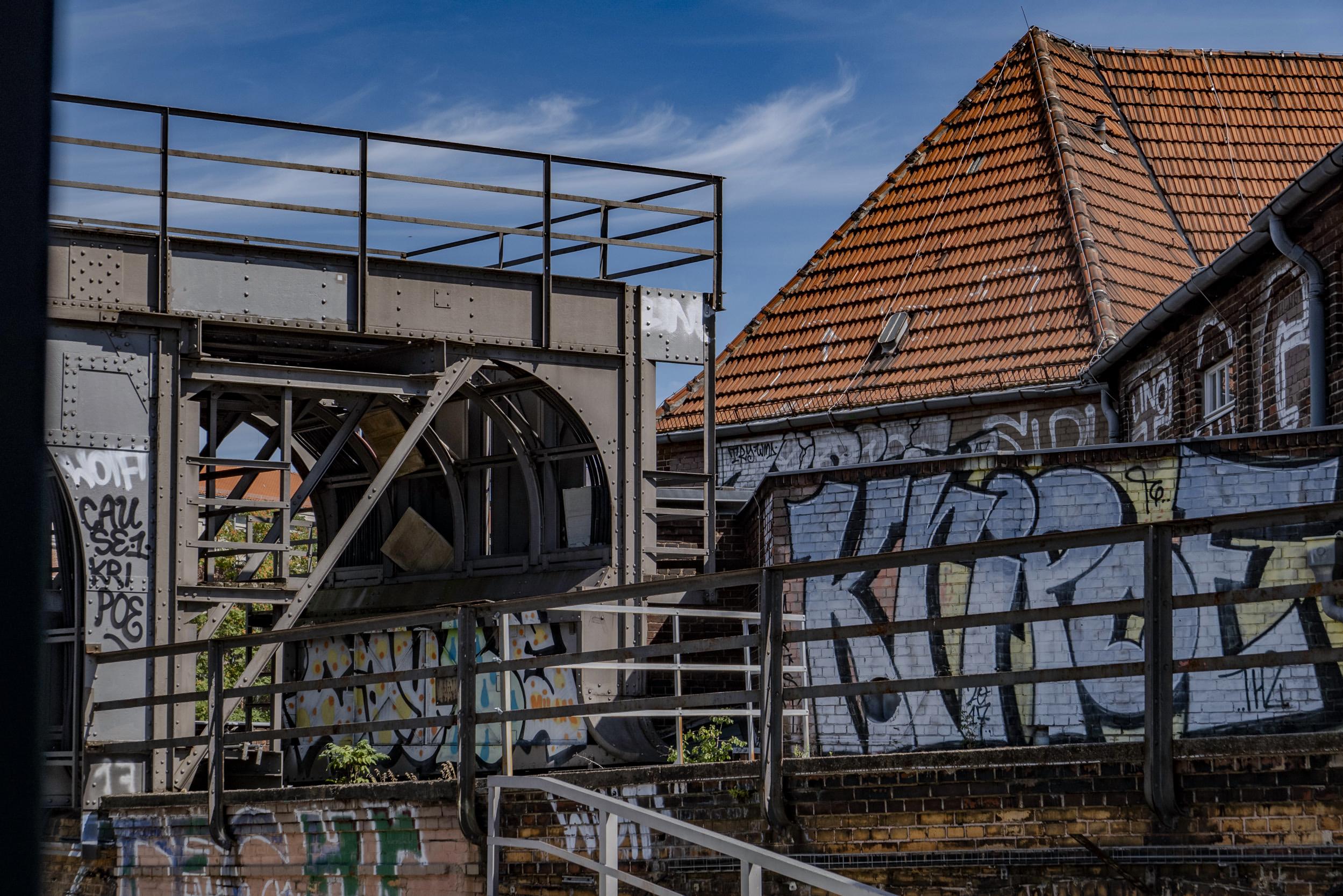

Now, however, we have a heavily revamped D-Lux 8 which, thanks to the creed of “the essential” has been simplified, redesigned and adopted into the established Leica family. There is genius here. But, as I will explain, it is flawed genius.
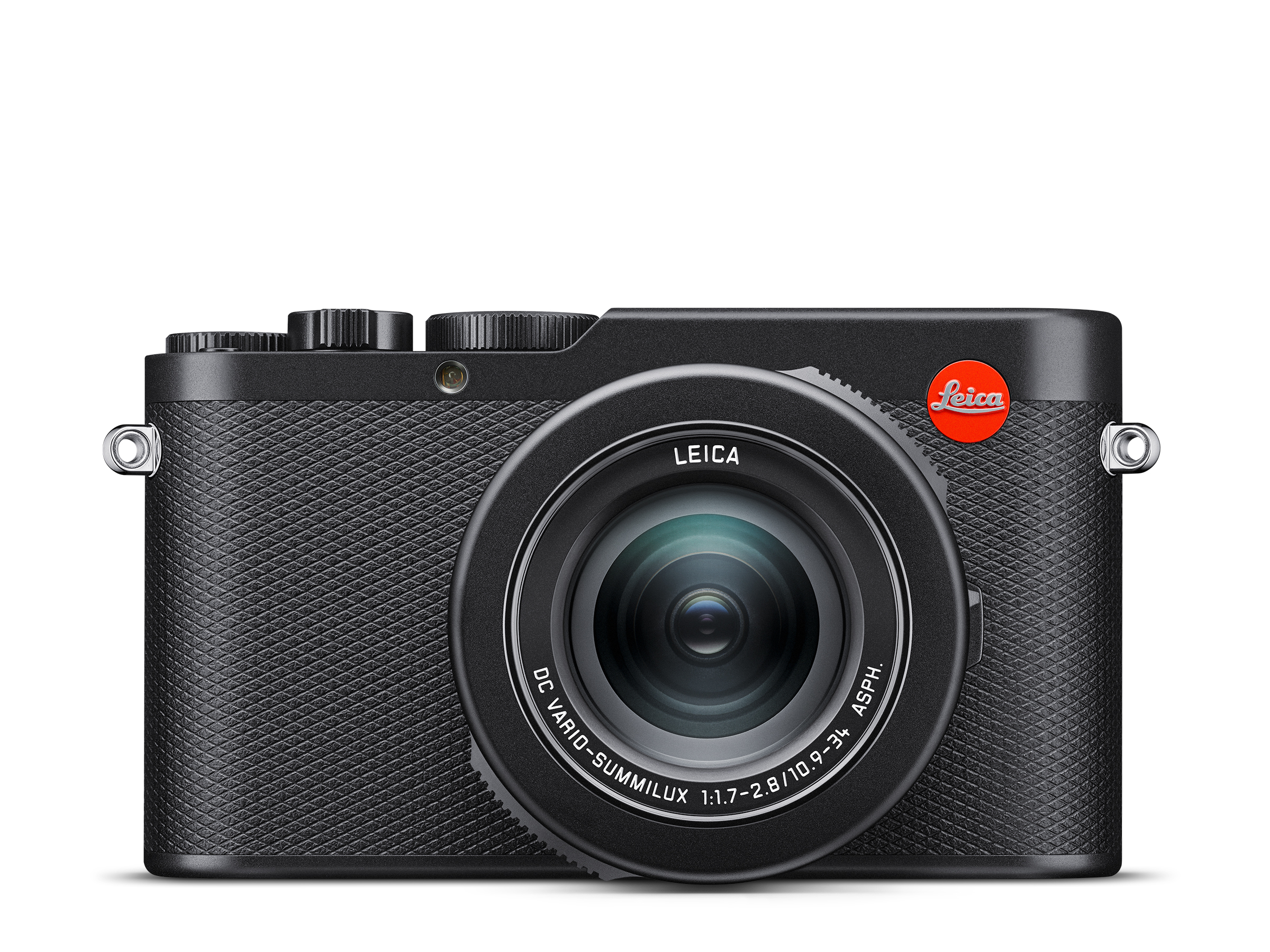
The D-Lux story
The D-Lux has been a part of Leica’s line-up for over 20 years. Starting in 2003 with a 1/1.25” 3.2MP sensor design based on the Panasonic DMC- F-1, the camera has evolved over nine generations.
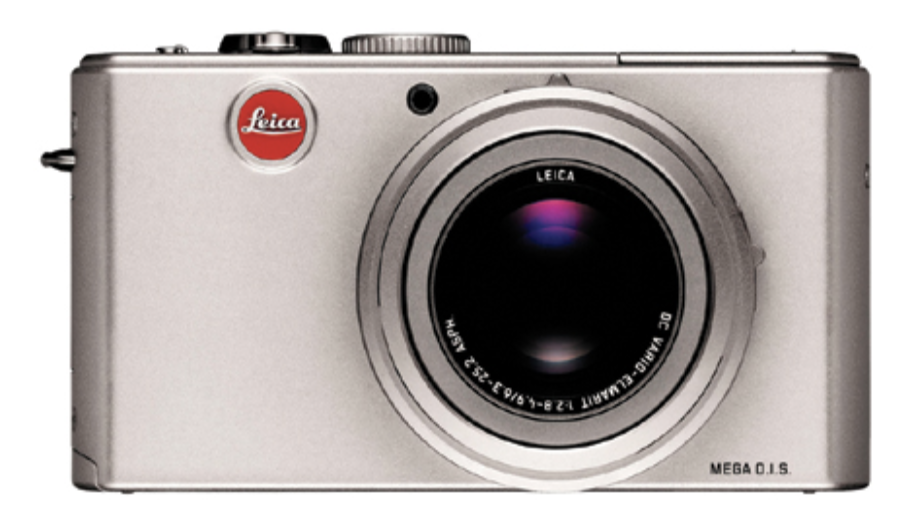
In The D-Lux 2 in 2005 the resolution was increased to 8.3MP and the sensor size became 1/1.7”, which remained through to the D-Lux 6 in 2012, although the resolution increased to 10.1MP with the D-Lux 3 in 2006.
There then followed the D-Lux 4 in 2008, the D-Lux 5 in 2010, and the D-Lux 6 in 2012. All had a similar 1/1.7” sensor with a resolution of 10.1MP. All were based on the Panasonic LX range of cameras.
At Photokina in 2014, however, the D-Lux (Typ 109) upped the game with a 12MP four-thirds sensor and a redesigned Leica DC Vario-Summilux 10.9-34mm f/1.7-2.8 ASPH lens. This equivalent to a 24-75mm zoom in full-frame terms. The D-Lux Null was introduced during Leica’s faddish period of dispensing with model numbers. As with the Leica M (Typ 240) sitting between the M9 and M10, the D-Lux (Typ 109) sat between the D-Lux 6 and D-Lux 7.
Both the D-Lux 8 and its predecessor, the D-Lux 7, feature a sensor with a headline size of 21.77MP, although the effective resolution is actually lower.

Leica D-Lux 8: Design
Leica’s policy of striving for “Das Wesentiche” (the essential) is laudable and has resulted in a simplified family menu system and user interface across the three digital non-rangefinder platforms — the SL3, the Q3 and now the D-Lux 8. Modern cameras have become too complicated, especially in the menu interface, and Leica has sought to remove unnecessary features and adopt a common, simplified menu system. It has worked well, and even the M rangefinder has benefited from this revised and attractive user interface.

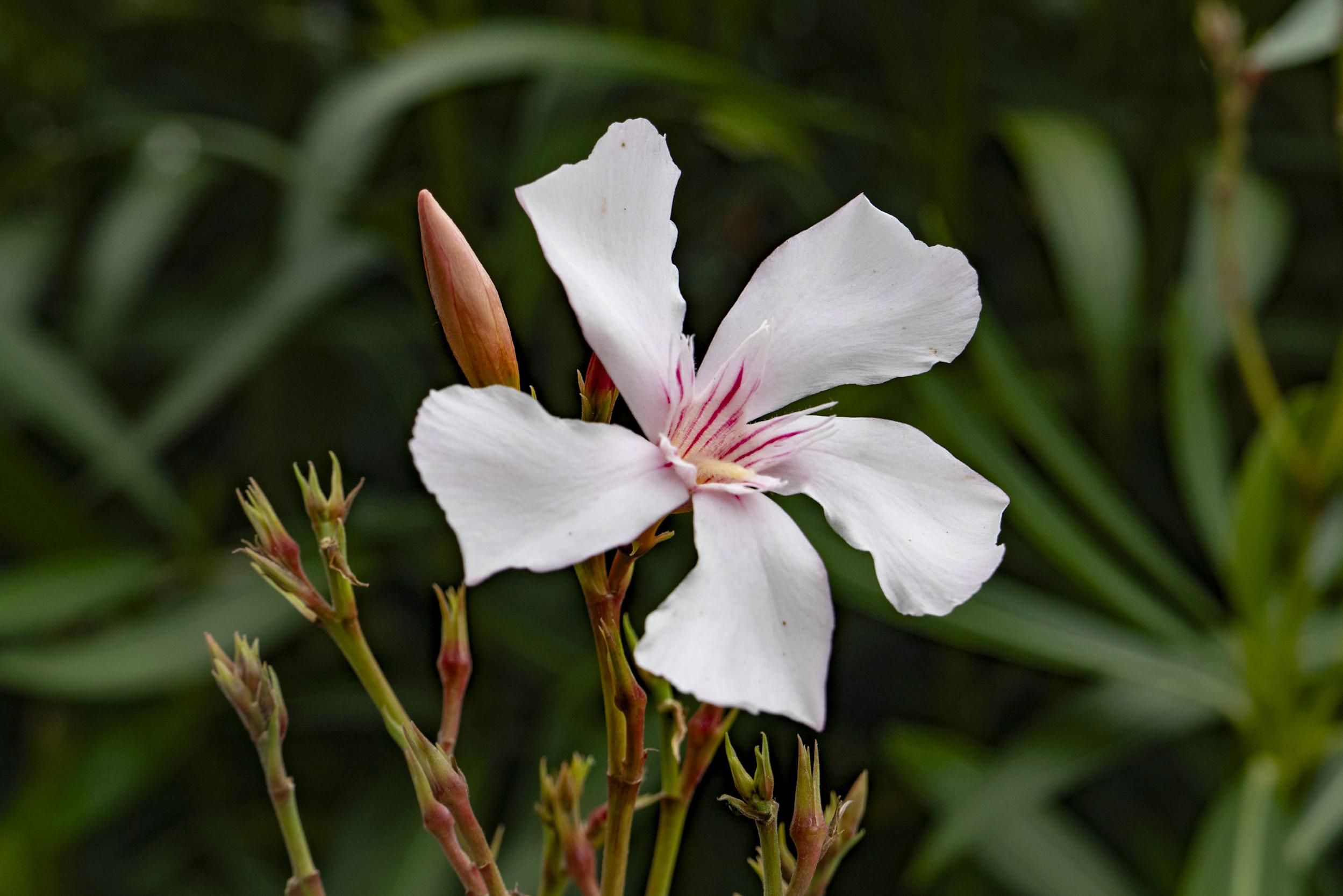
This “essential” makeover has done wonders for the D-Lux. The design is now very much Leica-oriented, whereas the outgoing D-Lux 7 resembled its Panasonic sibling, the LX100 II, both in appearance, control layout and the fussiness of its menu.
The D-Lux 8 is a handsome little camera which is every bit the mini Q3, at least at first glance. All this is good. I particularly like the chamfered edge to the top plate which, although more or less identical to the D-Lux 7, is happily fitting in with Leica’s new “cuddlier” approach on the SL3 The Q-like body covering works wonders in comparison with the smooth body of the ‘7, and I appreciate the replacement of the ‘7’s dedicated exposure control dial with a typical Leica customisable dial with centre button.
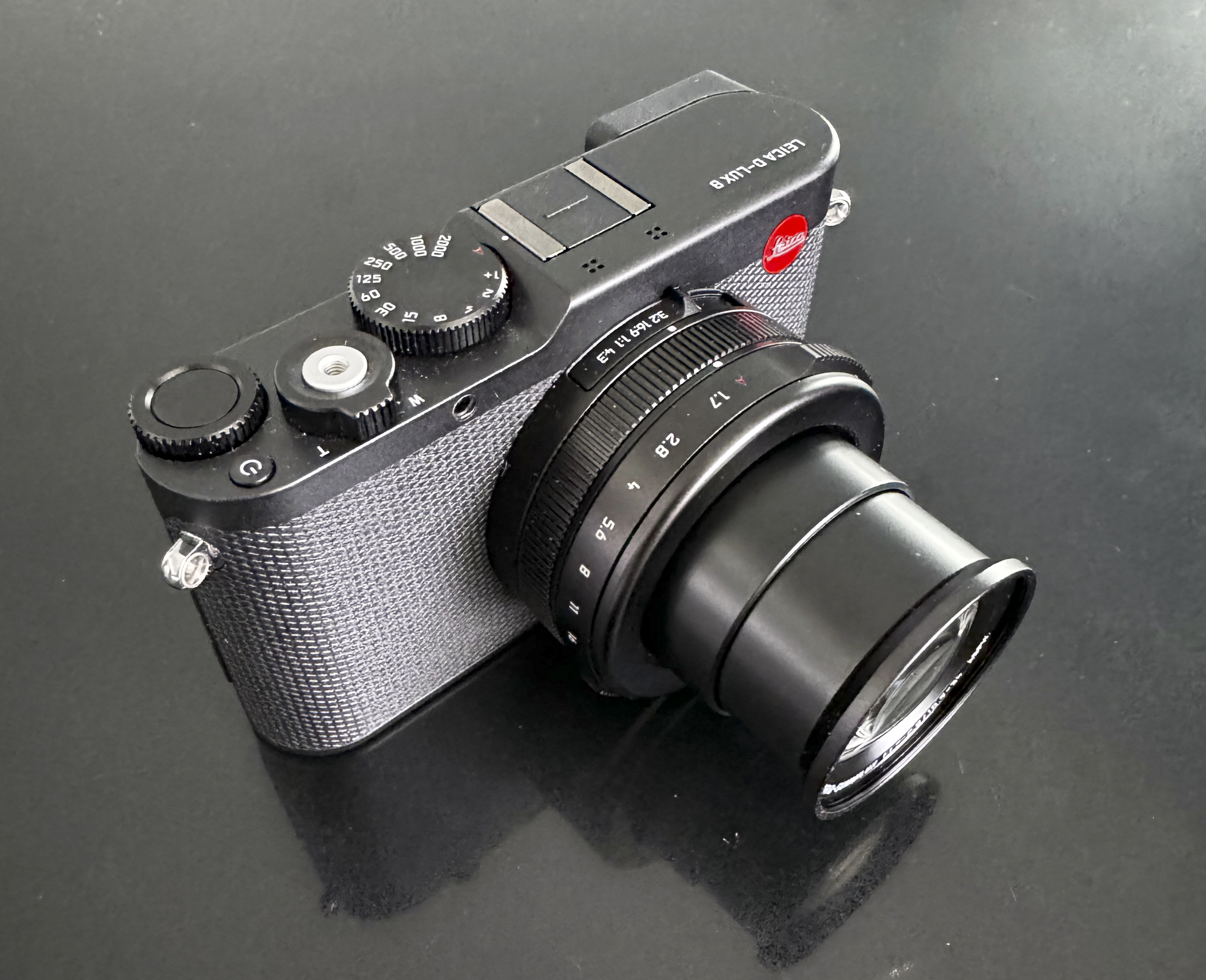

Leica DC Vario-Summilux 10.9-34mm f/1.7-2.8 ASPH lens
The neat zoom lens is identical to that of the D-Lux 7. It has a 24-75mm variable focal length (in 35mm equivalence) and an impressively fast aperture range of f/1.7-2.8. With a normal micro-four-thirds camera, the lens would be 12 to 35mm. However, the D-Lux has a slightly higher crop factor of x2.2 because of the way in which the variable aspect ratio is implemented. As a result, the lens range is 10.9-34mm to achieve the 24-75mm full-frame equivalence.
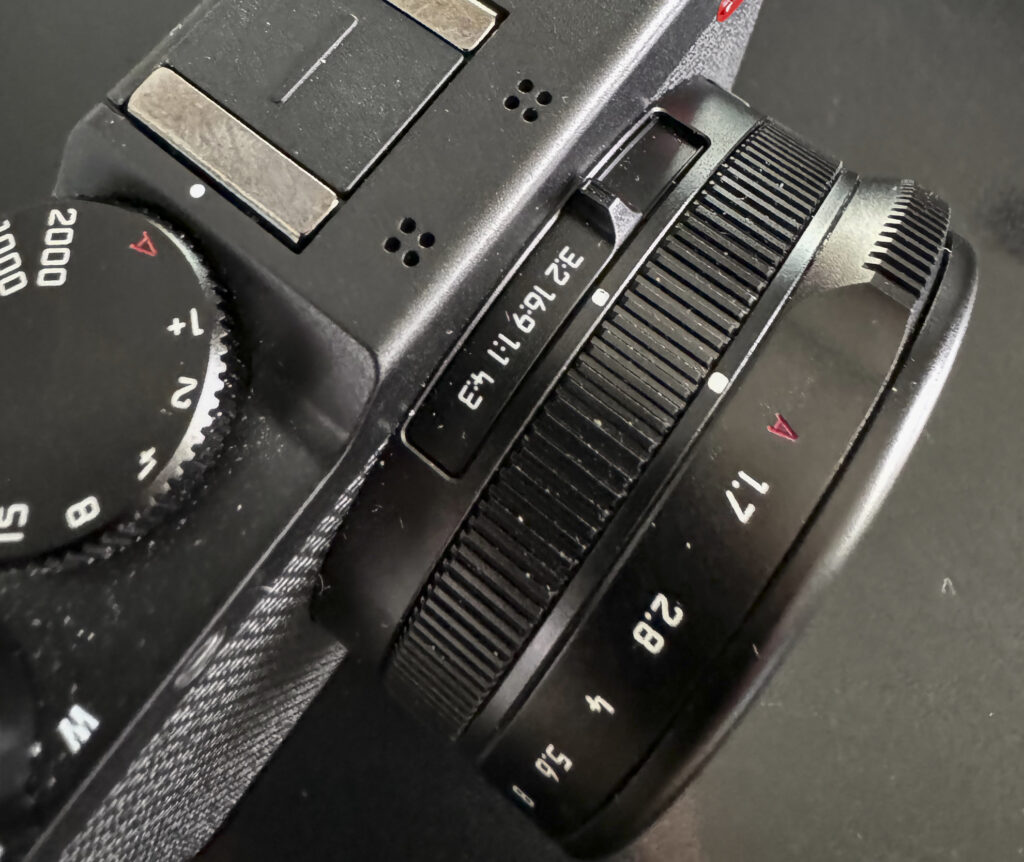
The aspect ratio slider sits on the top of the lens, immediately next to the body. I will discuss this feature later.
To the side of the lens is a slider switch to set manual focus, autofocus, or macro AF. Both this slider and the aspect ratio slider have a solid feel and a smooth action. The single lens ring is dedicated to manual focus, so is sadly redundant most of the time. It is, however, smooth when called into play and can be adjusted to either linear or non-linear action. With the D-Lux 7, it was possible to assign the ring to the zoom function and, even, the step-zoom. It is a pity that the function of the lens ring has been curtailed in this way.
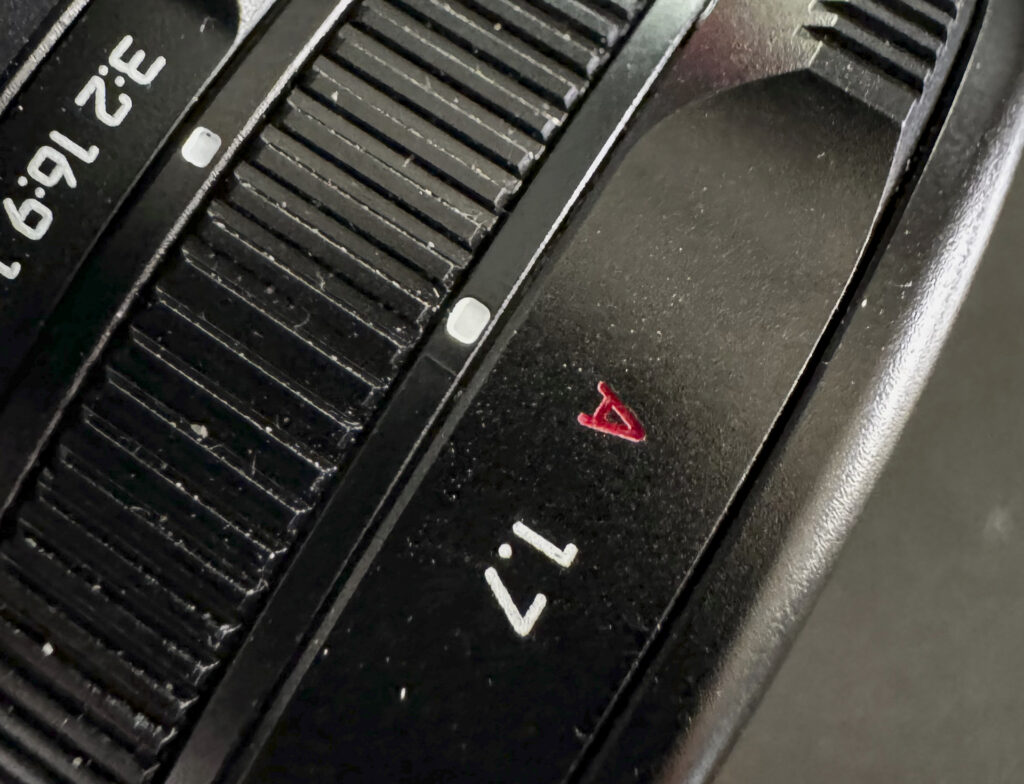
The aperture ring, to the front of the lens, is something of a mixed bag. In manual mode, it works smoothly, with clear detents in 1/3-stop increments. However, the detent between A(Auto) and the f/1.7 aperture on my camera is oddly stiff and requires significant pressure before it eventually jerks forward suddenly. This could be a fault on my camera, and I do not remember such a problem with the D-Lux 7 I owned previously.
When the camera is powered on, the zoom lens always reverts to 24mm and extends 35mm from the front of the housing. At maximum zoom, 75mm, it protrudes 55mm. Overall, even at maximum zoom, the front of the lens is only 80mm from the camera body, thus emphasising the benefits of the smaller sensor. Indeed, an APS-C camera of the size of the Fujifilm X100VI would be anything but compact if fitted with a 24-75mm zoom. With a four-thirds sensor, or even more so with a 1in sensor (as on the Sony R100 range) the size of the lens can be reduced to compact dimensions.
Mid-20s Leica
The back of the D-Lux 8 is pure mid-20s Leica, with a flush-mounted 3in screen and a minimal set of controls. The screen is fixed, which helps keep dimensions down, but this is rather out of place in the company of the Q3, which has now adopted a very useful tilting screen.
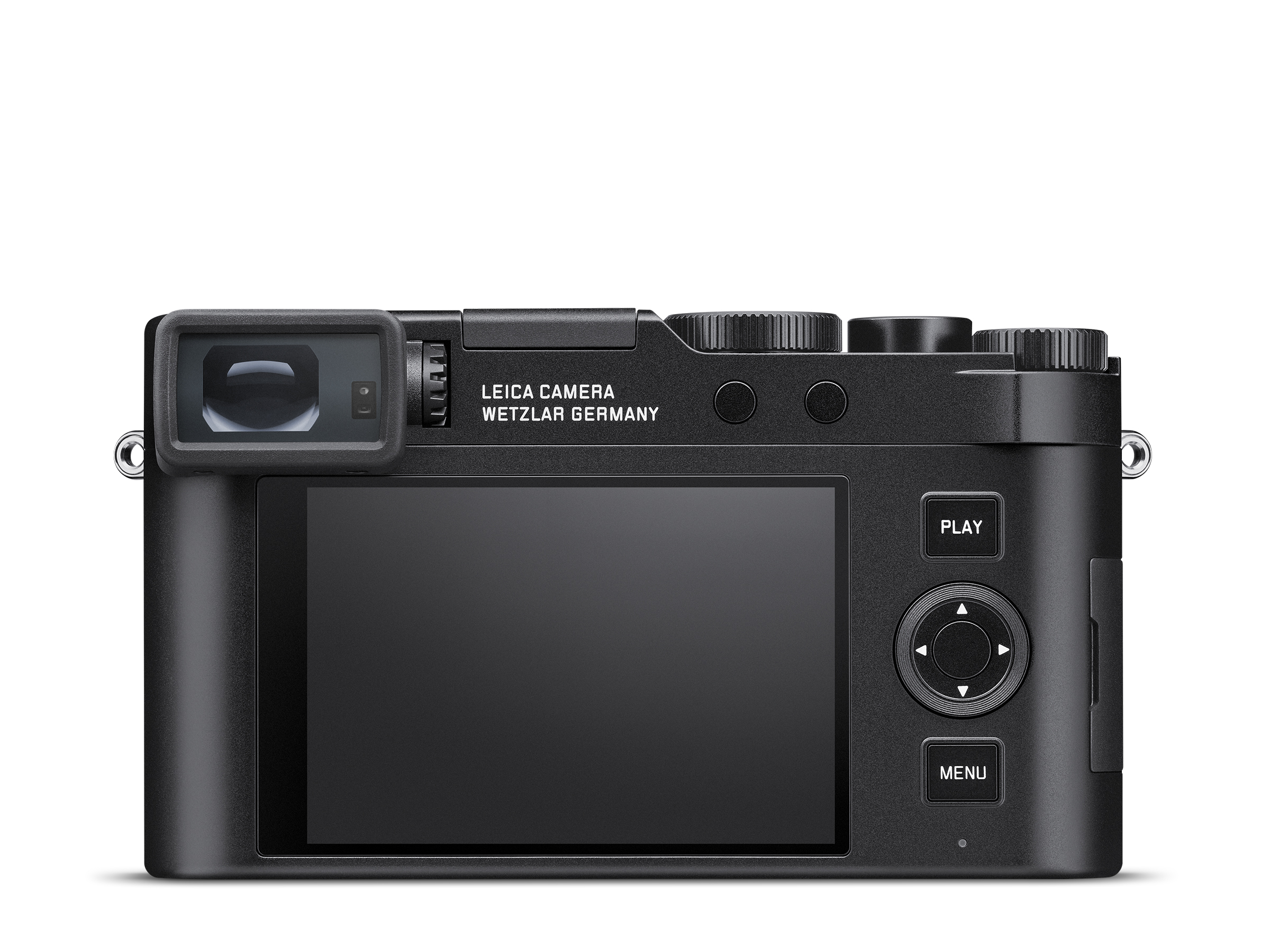
Alongside the screen are three controls, again virtually identical to the Q3 — Play, four-way pad and Menu.
Above the screen, on the rear of the top plate, are two customisable buttons which, again, are identical to those on the Q3. The new 2.36m dot OLED viewfinder has a rather prominent rubberised surround, which will please wearers of glasses.
To the right of the EVF is a diopter control which is vertical and easy to operate, probably more so than the flush body-aligned wheel of the Q3. It has a firm action and is unlikely to be nudged inadvertently.
Finally, there is a vestigial thumb grip, which goes some little way to making the camera easier to hold. To the right of the body (looking from the rear) is a rubberised flap which covers a USB-C socket and an HDMI connector.
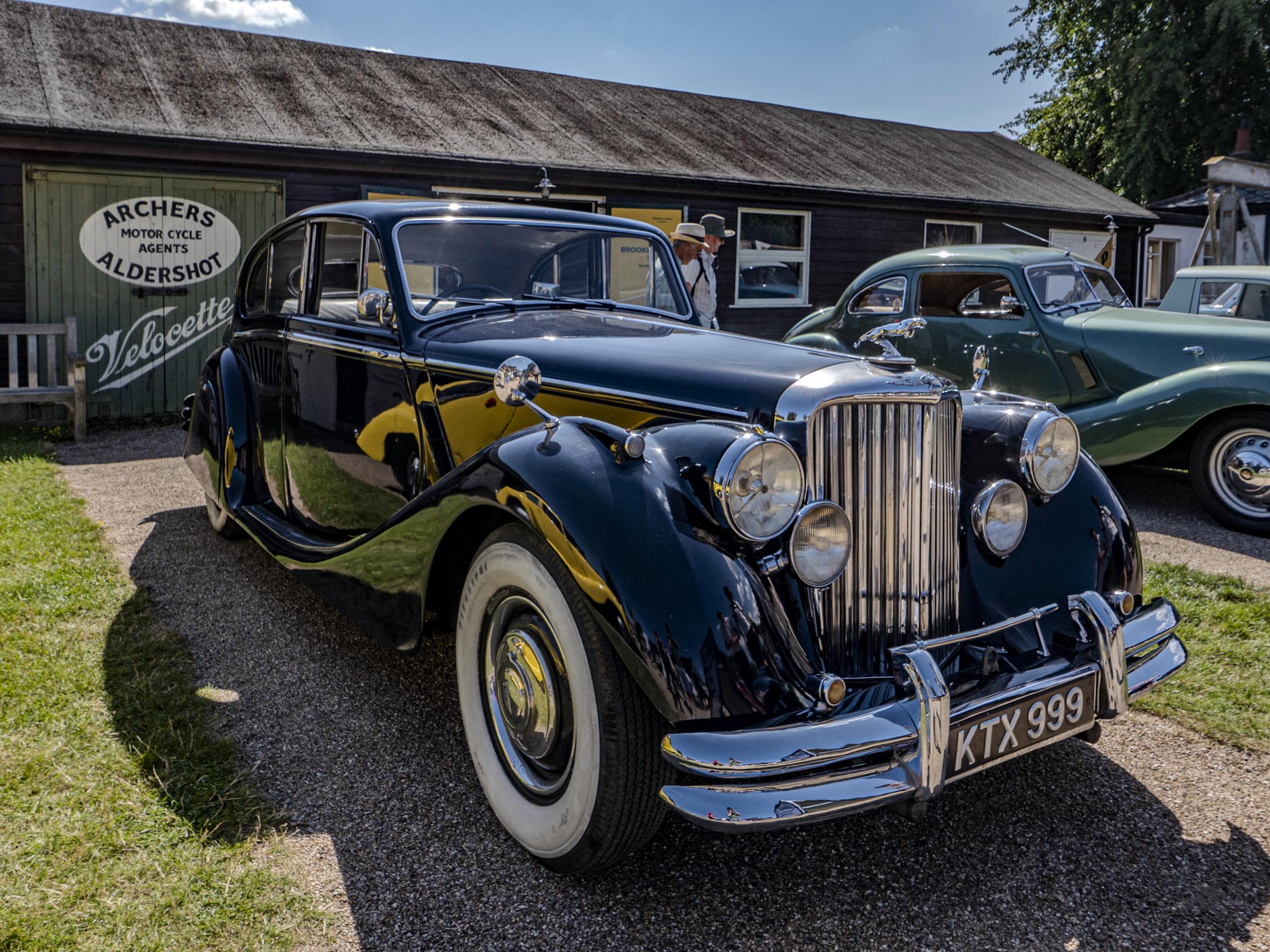
Accessory flash unit
While there is no flash built into the body, a small and very neat external flash unit with a guide number of 10/7 at ISO 200/100 is included in the box. It has a range of approximately 60cm to 14m at the 24mm focal length and 30cm-8.5m at 75mm.
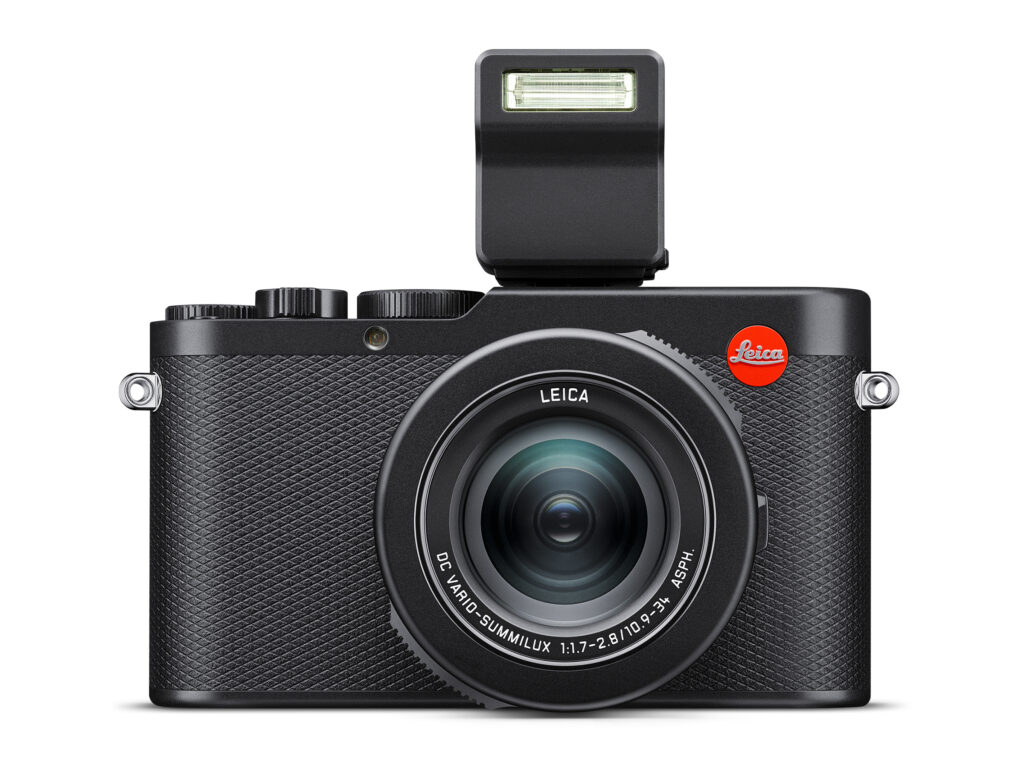
The overall impression of the D-Lux 8 is pleasing and, as far as styling and the user interface are concerned, the “essential” treatment is something of a triumph. The D-Lux 8 looks like a mini Q and feels like a mini Q. Above all, though, the simplified layout and the menu system (covered later) is perfect for existing Leica users. Whether you own a Q3, an SL3 or (to a lesser extent but in the essence true) an M11 you will feel very much at home.
Well done, Leica, on turning an outlier into a true member of the Leica family.
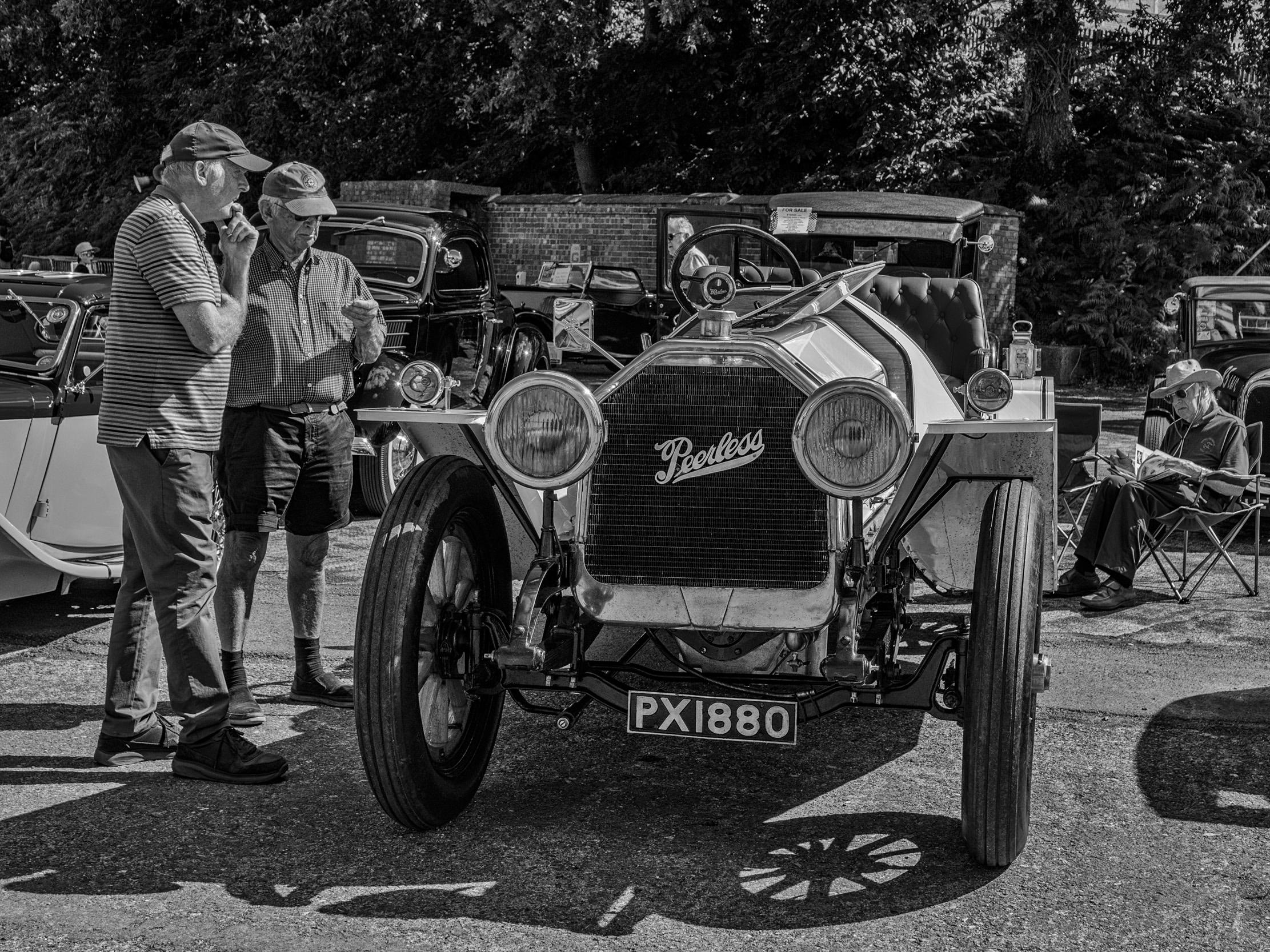
Leica D-Lux aspect ratio slider
While the aspect ratio of images in many cameras (including the Q3) can be changed within the menu, the D-Lux 8 and its predecessors are unusual in having a physical control to permit instant change of ratio. This has its advantages nowadays in creating off-the-peg JPGs to meet the requirements of various social media platforms. It could be a major selling point for those who normally post direct to social media.
However, the unusual corollary of this hard-wired facility is the reduction in the resolution of individual aspect-ratio shots in relation to the overall sensor size of 21.77MP. It accounts for an unusual crop factor of x2.2 compared with the x2 of a standard micro four-thirds sensor.
The highest resolution obtainable from the D-Lux 8 is thus 16.8MP, achieved when using the native 4:3 aspect ratio. This is why the sensor is described as “21.77MP/17MP (total/effective)”. It’s an important consideration, although in reality it has little effect on the quality of the images.
Although I have owned several D-Lux cameras, I have never found the physical aspect ratio control useful. It is less “essential” than some features (such as zoom controls) that have been considered inessential. However, I suspect the only reason this control feature remains is that Leica didn’t want to incur the cost of redesigning the lens.
Here are the image sizes and individual resolutions at the four standard aspect ratios:
| Aspect Ratio | Image size | Resolution |
|---|---|---|
| 16:9 | 5152×2904 | 15MP |
| 3:2 | 4928×3288 | 16.2MP |
| 4:3 | 4736×3552 | 16.8MP |
| 1:1 | 3552×3552 | 12.6MP |

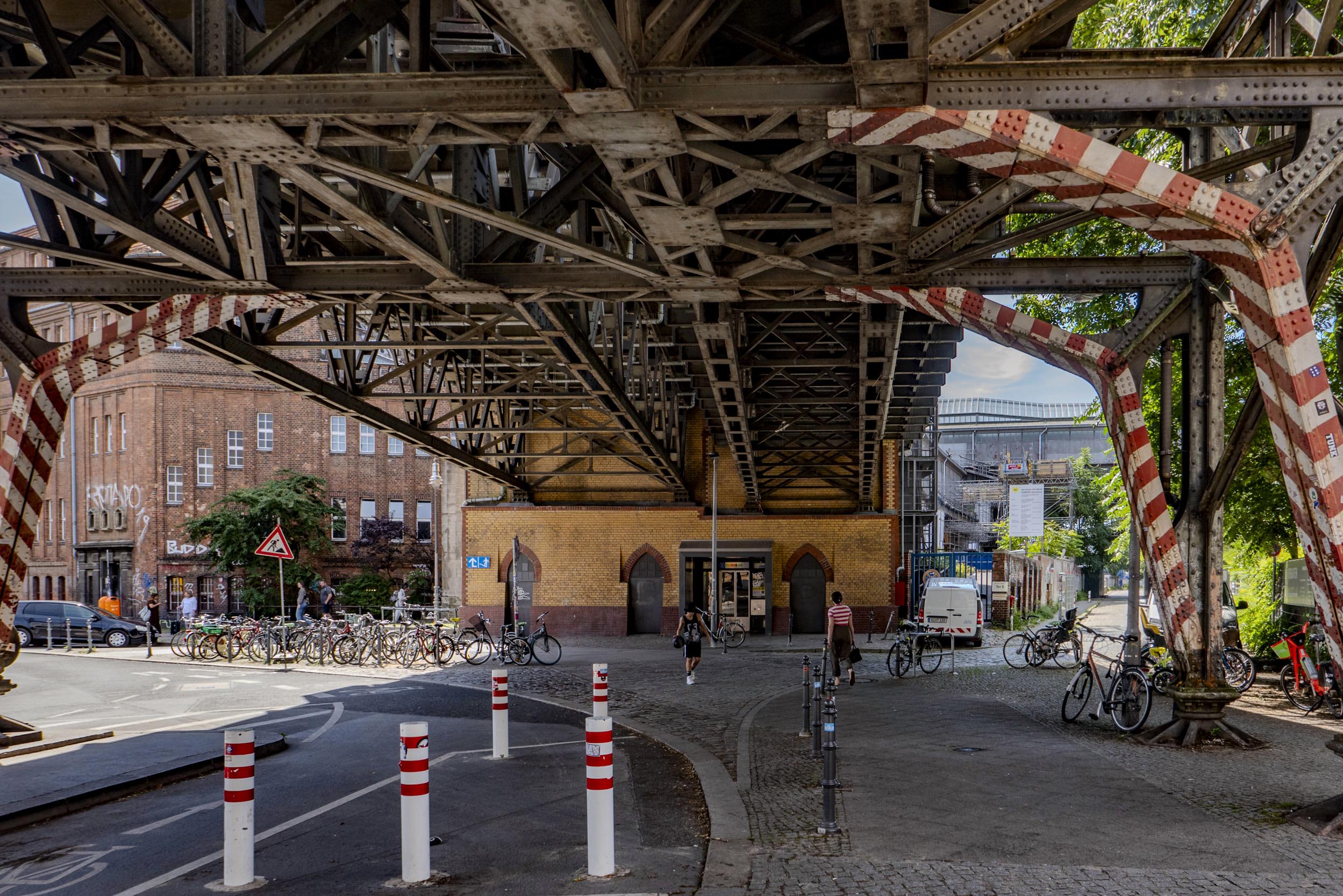
Menu system
For established Leica users, the adoption of a simplified menu system is a great boon. If you own another mirrorless camera from the range, such as the Q3 or SL3, you will feel completely at home. You will find setting up the D-Lux 8 to your preferences is supremely easy. This is one camera where you can jump in at the deep end without consulting manuals. The straightforward linear menu over five simple pages is just so refreshing in comparison with most other cameras on the market,
In this connection, I can add a little anecdote. While writing this review, I received an email to say that my long-awaited Fuji X100VI was in stock at the company’s store in Covent Garden. I collected it immediately, charged the battery and turned to setting up the camera. I had last used the Fuji during the test period in May, leading up to the review. So I expected an easy ride. Imagine my surprise when I realised I had forgotten everything; it was like starting anew. The menu system of that camera is impenetrable and such a contrast to Leica’s simplicity. Lesson learned.

As with other models, pressing the MENU button brings up the quick menu with PHOTO and VIDEO options. However, I am not covering video in this review. There are many other reviews where experienced videographers can provide a far better overview.
The PHOTO quick menu offers access to the major options and is virtually identical to that of the Q3. As usual, the bottom-right button leads to the full menu which consists of just five linear pages, each containing six options. By comparison, the Q3 has six pages, although the last contains just two items.
Five-page trick
I can understand Leica’s purists attempting to fit everything into five pages, each of six functions (just 30 headline options in total). Nevertheless, this is false economy if it leads to the jettisoning of vital functions — zoom controls, for instance (see section below). It would have made little real difference to extend the menu to six pages (as with the Q3), thus permitting a little more flexibility when deciding what is essential to the functioning of the camera and what is not.
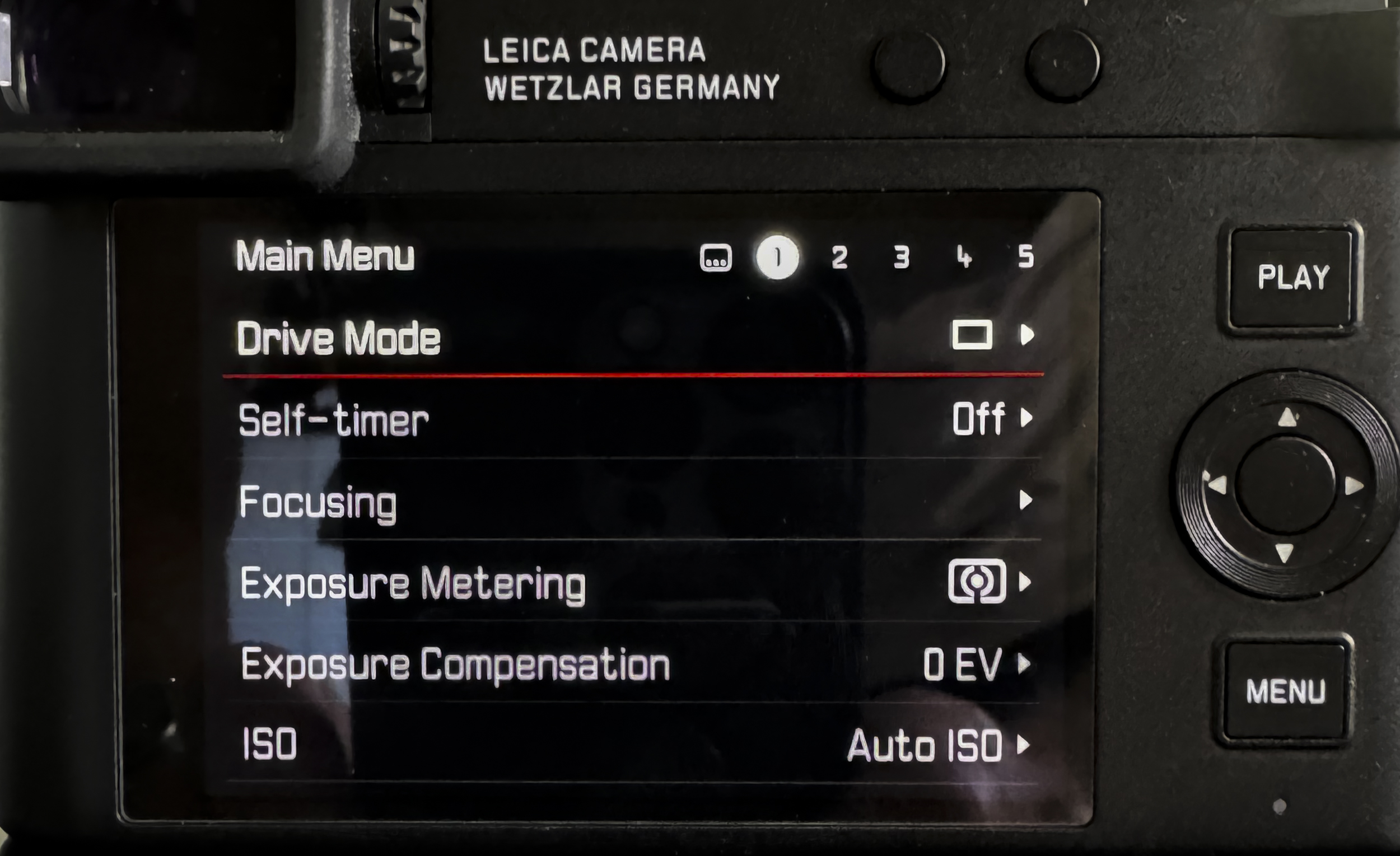
On balance, however, bringing the menu system into line with Leica’s current simplified practice is a triumph. The system is far easier to understand and use than that of the typically cluttered Panasonic menu of the D-Lux 7, not to mention that of the Fujifilm X1000VI.
Below is a comparison between the menu system of the D-Lux 8 and the Q3. The similarities and the sequence are obvious, although both cameras have some different options, such as perspective control and DNG resolution on the Q3, which are not part of the D-Lux 8’s offerings.
What is obvious, is that there is room for adding a few functions without straying too far from “the essentials”. This will be considered significant when we get around to discussing the missing zoom control features. Sticking to five pages for the D-Lux 8 is perhaps too essential.
| MENU | D-Lux 8 | Q3 |
|---|---|---|
| Page 1 | Drive mode | Drive mode |
| Self-timer | Self-timer | |
| Focusing | Focusing | |
| Exposure metering | Exposure metering | |
| Exposure compensation | Exposure compensation | |
| ISO | ISO | |
| Page 2 | Auto ISO settings | Auto ISO settings |
| White balance | White balance | |
| File Format | File format | |
| JPG settings | DNG Resolution | |
| Highlight/Shadow | JPG settings | |
| iDR | Scene mode | |
| Page 3 | Scene Mode | Optical image stabilisation |
| Optical image stabilisation | Photo aspect ratio | |
| Shutter Type | Perspective control | |
| Flash settings | Shutter type | |
| Exposure preview | Flash settings | |
| Auto review | Exposure preview | |
| Page 4 | NR long exposure | Auto review |
| Thumb wheel | NR long exposure | |
| User profile | Customise control | |
| Capture assistants | Digital zoom | |
| Display settings | User profiles | |
| Leica FOTOS | Capture assistants | |
| Page 5 | Format | Play mode setup |
| Camera settings | Display settings | |
| Camera information | Leica FOTOS | |
| Language | Camera settings | |
| Reset camera | Camera information | |
| Page 6 | Language | |
| Reset camera |

Leica D-Lux 8: Controls
The D-Lux 8 control layout is also a great improvement on the rather fussy implementation of its predecessor. The similarity with the layout and functions of other Leica cameras is more important than most people realise, and it is a major part of the buying decision if you already own one Leica camera.
As an example, the two small buttons on the top plate are customisable to a wide range of functions, the same as the identically placed buttons on the Q3. Initially, I set the left-hand button on the D-Lux to control EVF/auto/screen toggle, mainly because I prefer the screen switched off permanently unless I need access to the menu. And it is logical to have the toggle button next to the EVF, The right-hand button I assigned to focus mode. Picking up my Q3, to check similarities, I realised that the EVF toggle was assigned to the right-hand button and crop-zoom to the left. Muscle memory promised to play havoc when switching cameras. So I reassigned the Q3 settings so that the EVF control is on the left and the crop-zoom control on the right.
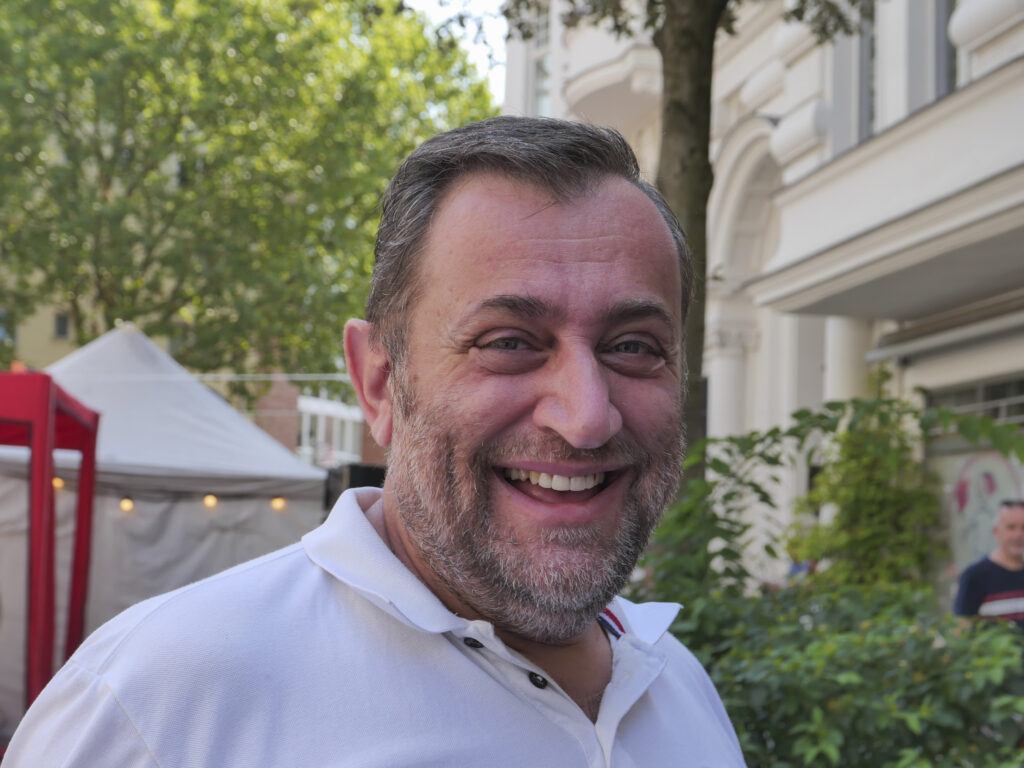
Family resemblance
This is the fundamental benefit of the new coordinated system, the ability to set up all your Leica cameras to similar operation. It makes swapping between cameras much less stressful, and it is a step towards being able to synchronise settings between cameras. It is, for instance, a good argument for buying the Leica SL3 instead of a cheaper Panasonic which suffers from complex menus and controls.
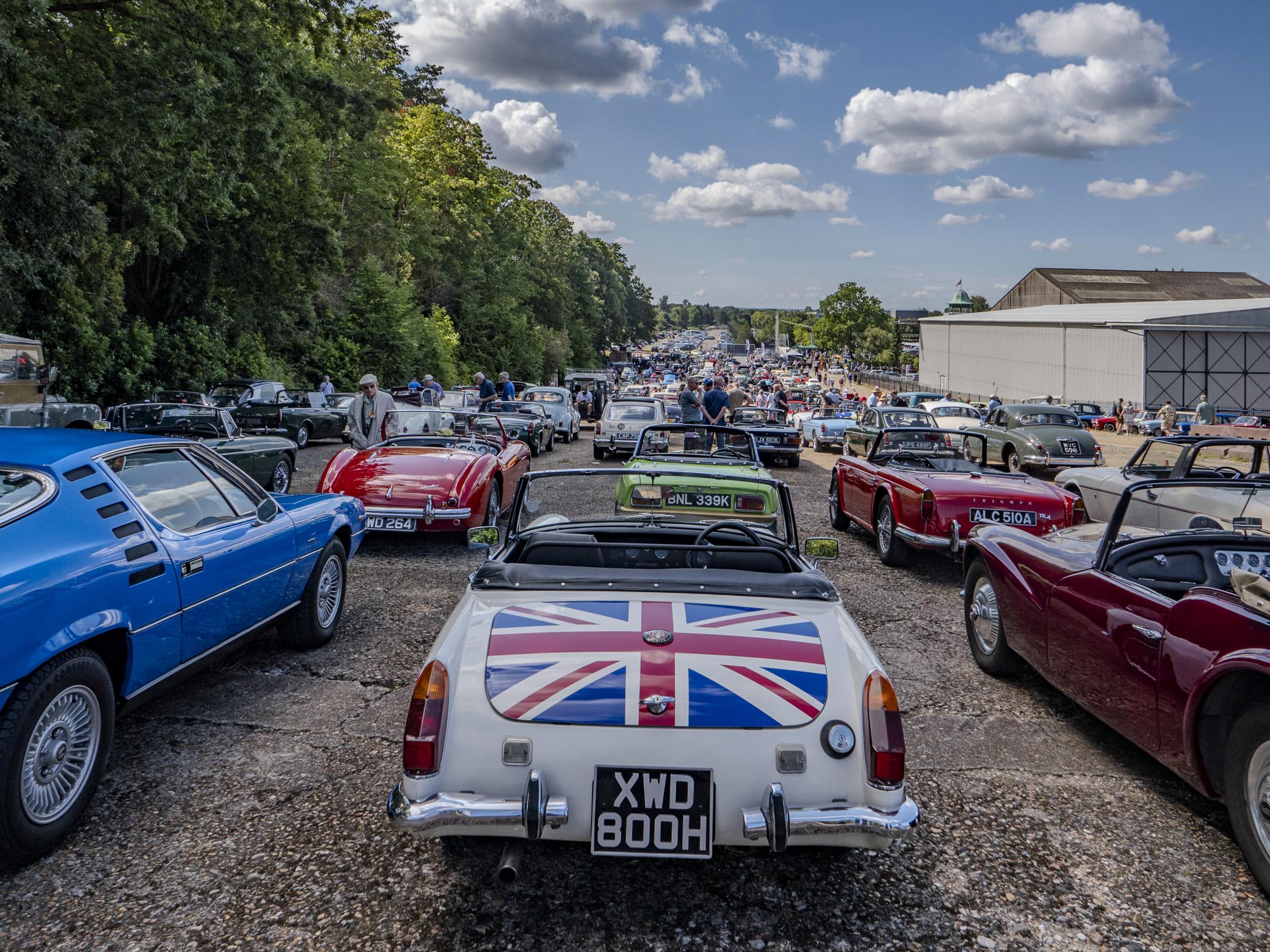
There is a difference, however, between button assignment on the D-Lux 8 and the Q3 which caused pause for thought. Button customisations are included in the menu options on the Q3. On the D-Lux 8 menus, only the top-plate thumb-wheel dial has a menu option. At first, there appears to be no way of reassigning the function of the other buttons. In fact, as I discovered, this has to be done directly by long-pressing the button and choosing the desired option. This is not a problem once you figure it out, but I am not sure why there should be this difference between the models.
Incidentally, the position of the two function buttons makes it difficult to use a cheap, off-the-shelf thumb grip. It’s the same with the Q3, and the expensive Leica thumb grip is the only real solution because it provides a push-through button function. Unfortunately, there is currently no Leica thumb grip available for the D-Lux 8 because of the button placement. Instead, I decided to buy the hand grip, which does a similar job. On balance, given a straight choice, I would prefer the thumb grip.
The four-way pad acts as a navigator for focus points and menu options, while the centre button toggles the screen display, from a completely clear view to one including settings and other information. A long press on the centre button (as with all the soft controls) allows access to a wider range of camera functions. Unlike with other Leica cameras, there is no extended option for the viewfinder, The only options are viewfinder/screen/auto.
There is no way of locking the focus point to a central position, unlike with Panasonic, Fujifilm and some other manufacturers. This is a long-standing bone of contention between enthusiast users and Leica. The factory is adamant that any form of focus lock is not required.
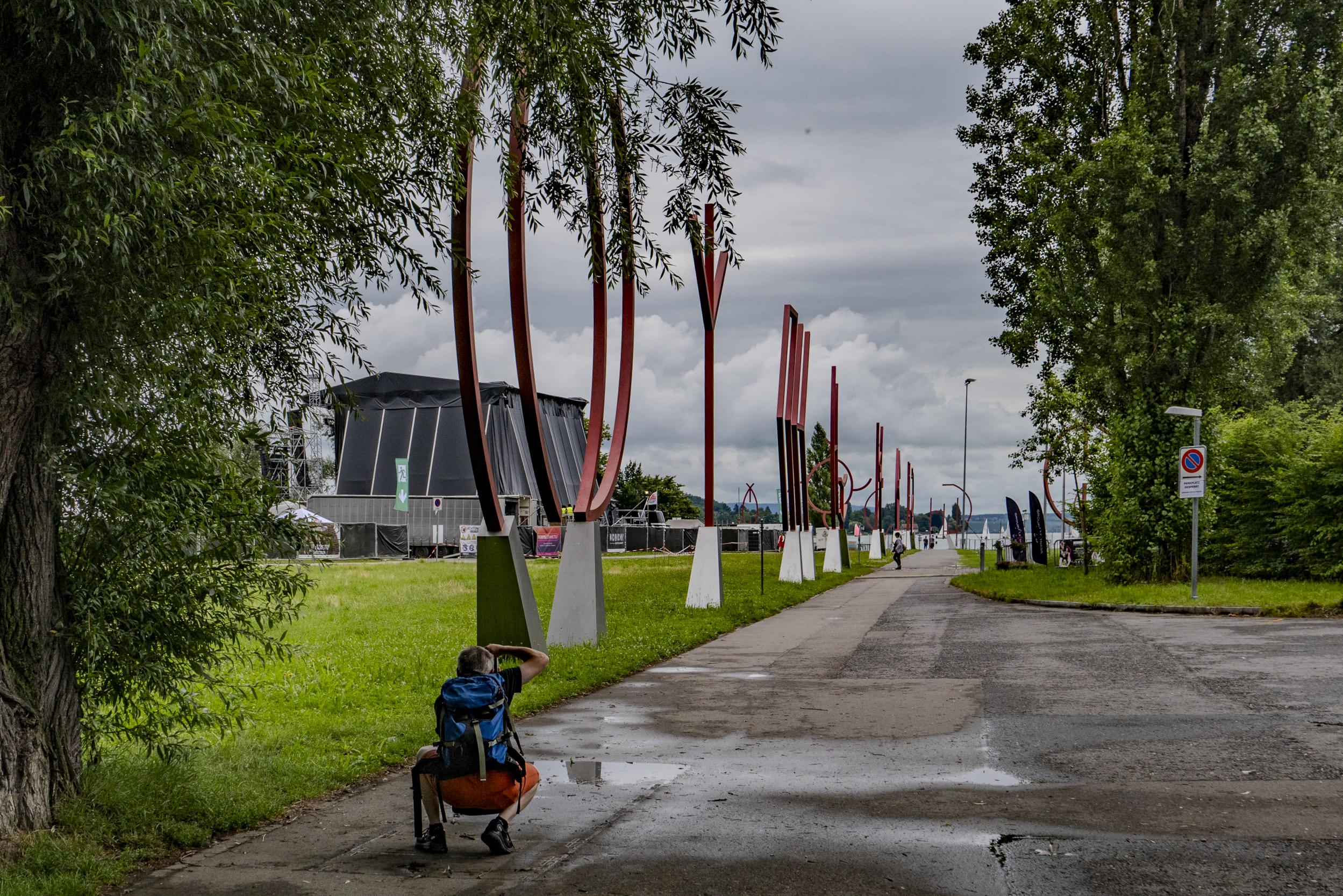
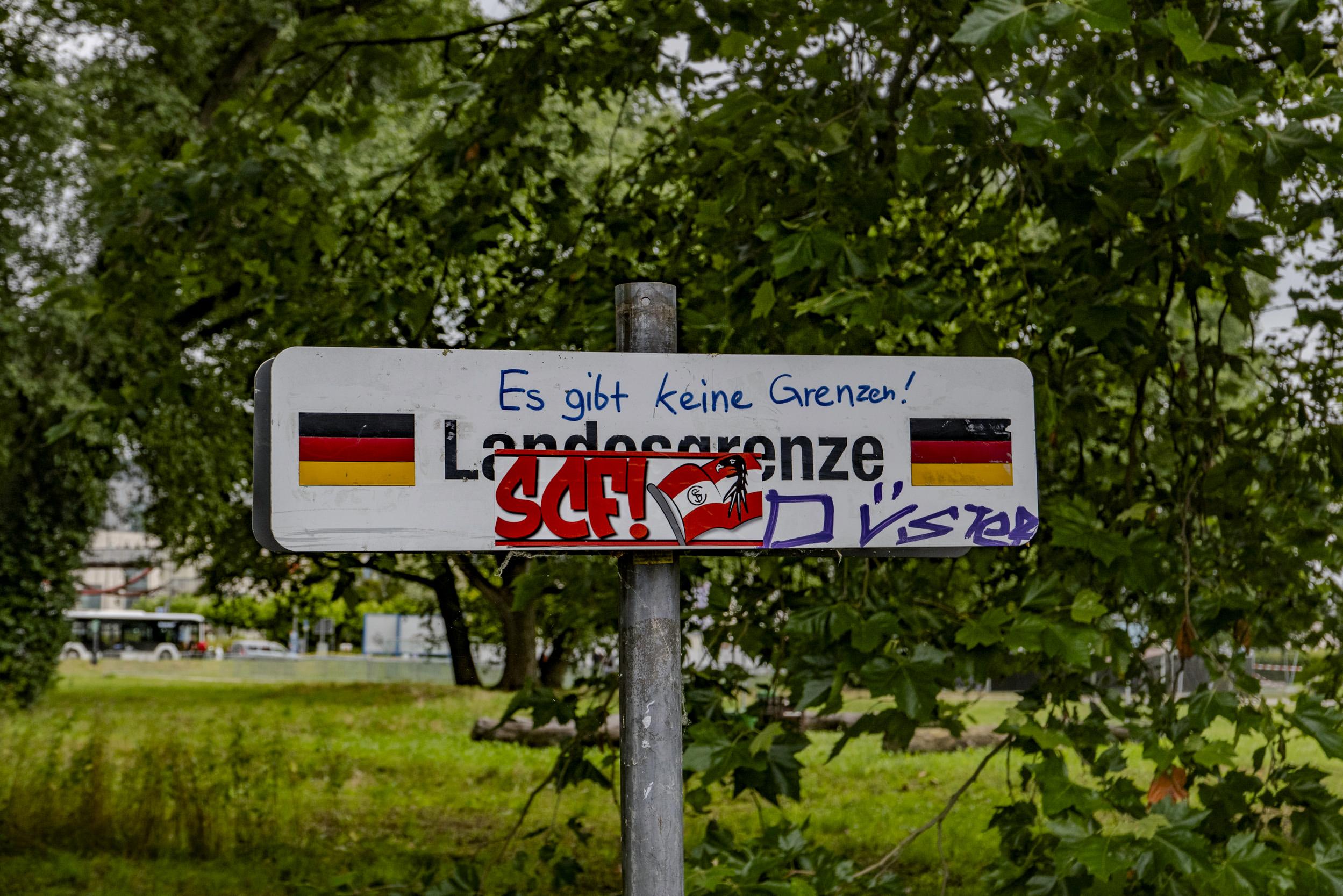
However, this is a particular problem for photographers who prefer to work with a fixed centre-point focus. Any movement of the focus point from the centre is annoying, and potentially fatal if raising the camera to your eye for an impromptu shot.
On the D-Lux 7, the function lock feature allowed locking of selected functions (in the main, to prevent inadvertent changes by nudging the controls). This has been removed from the D-Lux 8 to bring it into line with established Leica practice (which is to avoid any form of function locking). Oddly, respite Leica’s protestations that function locks are unnecessary, the SL3 now incorporates effective measures to minimise frustration. Let’s hope this change filters down to the Q3 and D-Lux in the future.
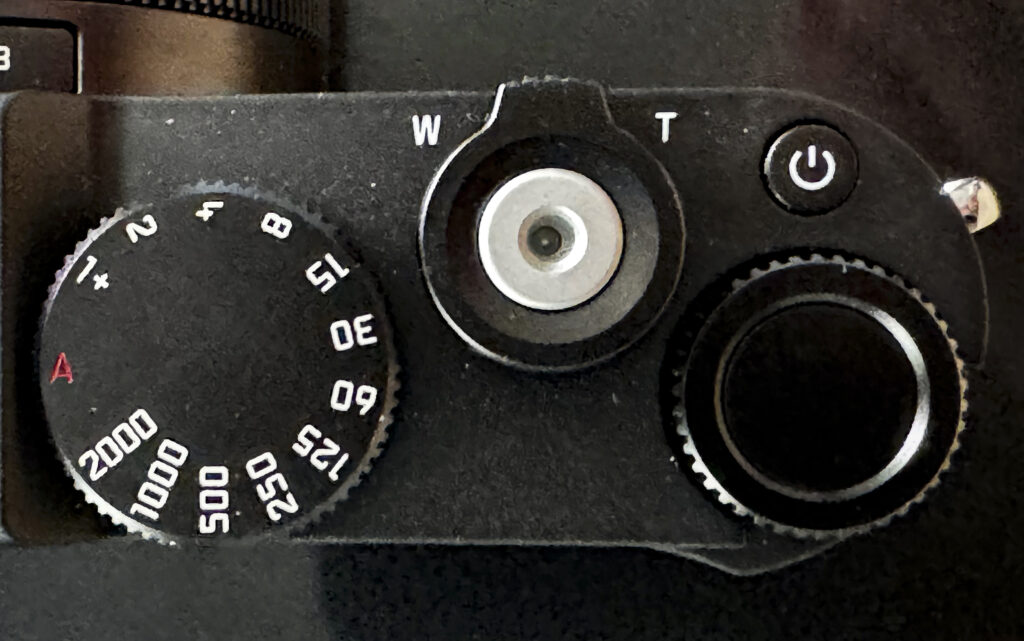
Top controls
On the top plate, the familiar shutter-speed dial is similar to that on the D-Lux 7, although the manual speed settings extend only to 1/2000s instead of the previous 1/4000s. I have not seen any explanation for this change and can only assume there wasn’t room for the extra digits.
The fastest speed for the mechanical shutter is still accessible from the menu, however. The electronic shutter, if selected, takes the maximum speed up to 1/16000s. It is possible to choose between the mechanical shutter or the electronic shutter, plus a hybrid function where the electronic shutter kicks in automatically after 1/4000s.
The shutter button has been improved by the addition of a thread for remote release or the fitting of a soft release button. Another welcome change.
Concentric with the shutter button is a toggle lever to operate the zoom. This is a direct carry-over from the D-Lux 7 and its predecessors. However, the toggle is unsatisfactory as the primary (and only) method of operating the zoom. I will discuss this later.


Replacing the dedicated exposure compensation dial featured on the D-Lux 7 is a soft thumb wheel and button which can be assigned to many functions. I have set it to operate the exposure compensation function, which offers ±3 EV in 1/3 EV increments, thus mimicking the dedicated control of the D-Lux 7. As usual, a long press on the centre button allows other functions to be selected.
Unfortunately, however, the compensation adjustment is lost when the camera switches itself off (as it is bound to do after a maximum of ten minutes of inactivity unless deactivated). I would prefer the exposure compensation (and, for that matter, the zoom setting) to be made “sticky” and ready to resume service when power returns. On other cameras, in particular the Q3, I have compensation permanently set to -1/3EV to offer some protection against blown highlights. [Correction: The way around this is to set the exposure compensation in a profile. In this case it will stick during the power cycle – kudos to reader Jon Cheffings for pointing this out)].

Power button
A further bone of contention (at least for me) with the new layout is the power button. The D-Lux 7, in common with the Q3 and M11, has an easy to operate physical lever to control the power. You know the status by glancing at the lever’s position. This ensures that these cameras can be turned off only by operating the physical switch. The cameras can thus be brought back to life by a quick tap of the shutter button, something I do habitually when carrying the camera in one hand. It is thus immediately ready for the next shot.
With a soft power button, such as that on the SL3 and now on the D-Lux 8, the camera can switch itself off after a period. By default, the D-Lux 8 switches off completely after a specified period (one minute to ten minutes) and I find this annoying, particularly since exposure compensation, zoom and (zone) focus settings are lost.

If the camera switches off, it is then necessary to perform a three-step routine before taking a shot — first press the power button, then adjust the zoom and then press the shutter. The way around this, at the expense of possibly reducing battery life, is to disable auto power off. This means that the camera will behave in the same way as a Q or M, where a deliberate action has to be taken to power down. After a time, the position of the lens offers an indication of power status, so there is no real danger of leaving the camera powered when not in use.
I’m not a great fan of soft power buttons, however. The Ricoh GRII has the same set-up and I have always hated it. However, I suspect Leica is changing over to soft control (which has already been done on the SL3) to permit eventual remote operation. No doubt the Q4 will follow suit and that will be the end of physical levers, at least as far as the mirrorless range goes. So we’d better get used to it.
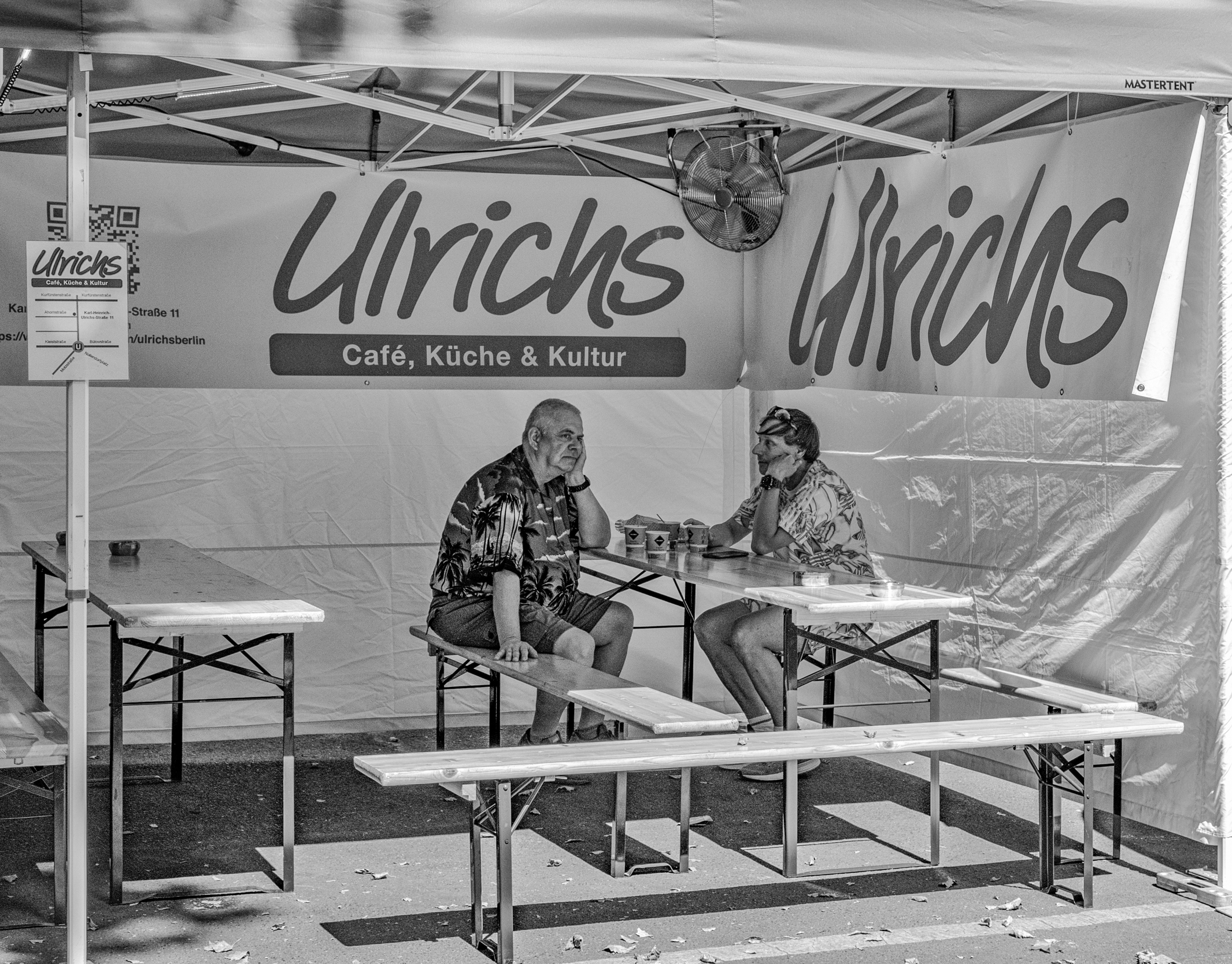
The positioning of the power button, to the right of the shutter release, is also a problem. On too many occasions, I found my finger pressing the power button instead of the shutter — thus switching off the camera instead of taking a photograph. You may think this is inexcusable on my part, especially since I had a raised soft-release “bug” screwed into the shutter thread most of the time. And the “feel” of the two controls is entirely different. But it does happen.
The power button would have been better placed behind the shutter button, between the shutter speed dial and the soft thumb-wheel control. Note that on the SL3, the soft power button is on the back of the camera, out of harm’s way to the left of the EVF and wholly inoffensive.
These niggles apart, the control layout of the D-Lux 8 is a substantial improvement over that of the D-Lux 7. Apart from the improved ergonomics, the familiar layout makes life so much easier when moving to and from any another Leica camera. In fact, this brand conformity is a good reason to choose the D-Lux 8 over another compact camera from a different manufacturer.

Battery and charging
It is no surprise to find that the D-Lux 8 relies entirely on in-camera battery charging. The advantages of the universal USB-C interface and in-battery charging have been discussed previously, and you can view all the arguments in this earlier article.
Unusually, however, the USB-C connector on the D-Lux 8 is for power only. There is no way to transfer data via the connector on this camera. This is one aspect that Leica has got wrong, although there could be a good technical reason for the omission. [Correction: Reader Neil Johnstone points out that the D-Lux 8 can be connected as mass storage and data can be transferred via cable to a computer. This is so and the reports were misleading}.
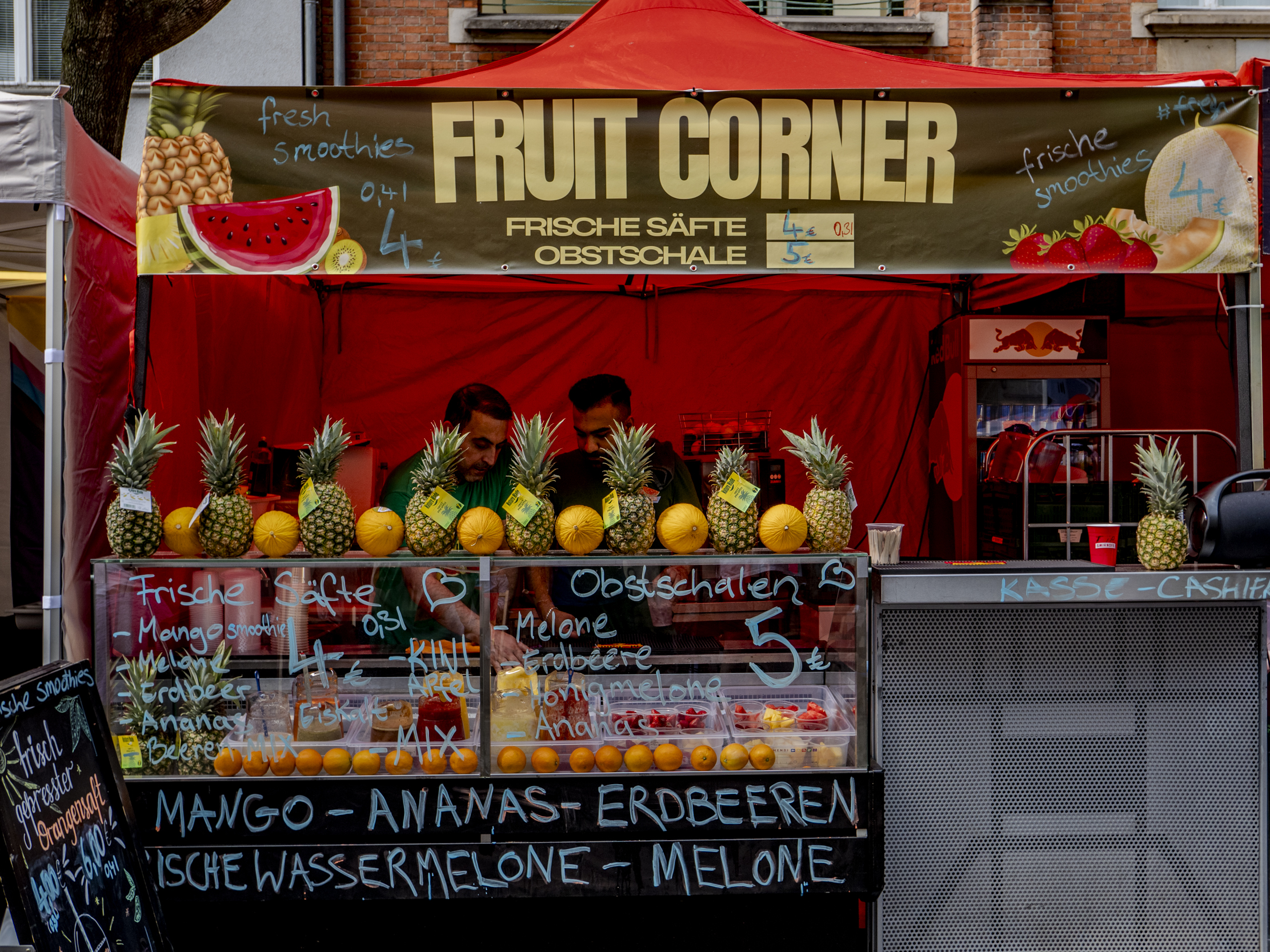
The lithium-ion battery is rated at 7.2v DC and has a capacity of 1025 mAh. It is identical to the battery used in the D-Lux 7 and the Panasonic LX100. There are many third-party options available, as well as multi-battery chargers for those who hate relying on in-camera charging.
However, you will certainly need extra batteries because the official ratings of 240 shots (using EVF) and 300 (using LCD), are decidedly average at best. In my experience, battery life is even worse than this. It is also misleading in that the battery level looks promising for a time and then drops off the cliff. I would prefer a percentage option such as that offered by OM systems on the OM-1.
Leica D-Lux 8: Handling
The D-Lux 8 follows Leica’s established simplicity in body design. It handles well and feels solid and comfortable. The camera is light enough for a substantial additional grip to be unnecessary, although I fell into the trap of purchasing the factory handgrip before I’d handled the camera. The hand grip does give a feeling of greater security and is a hook for the fingers when carrying the D-Lux, but it is not essential, and it does add a few millimetres of height and a little weight to the camera.
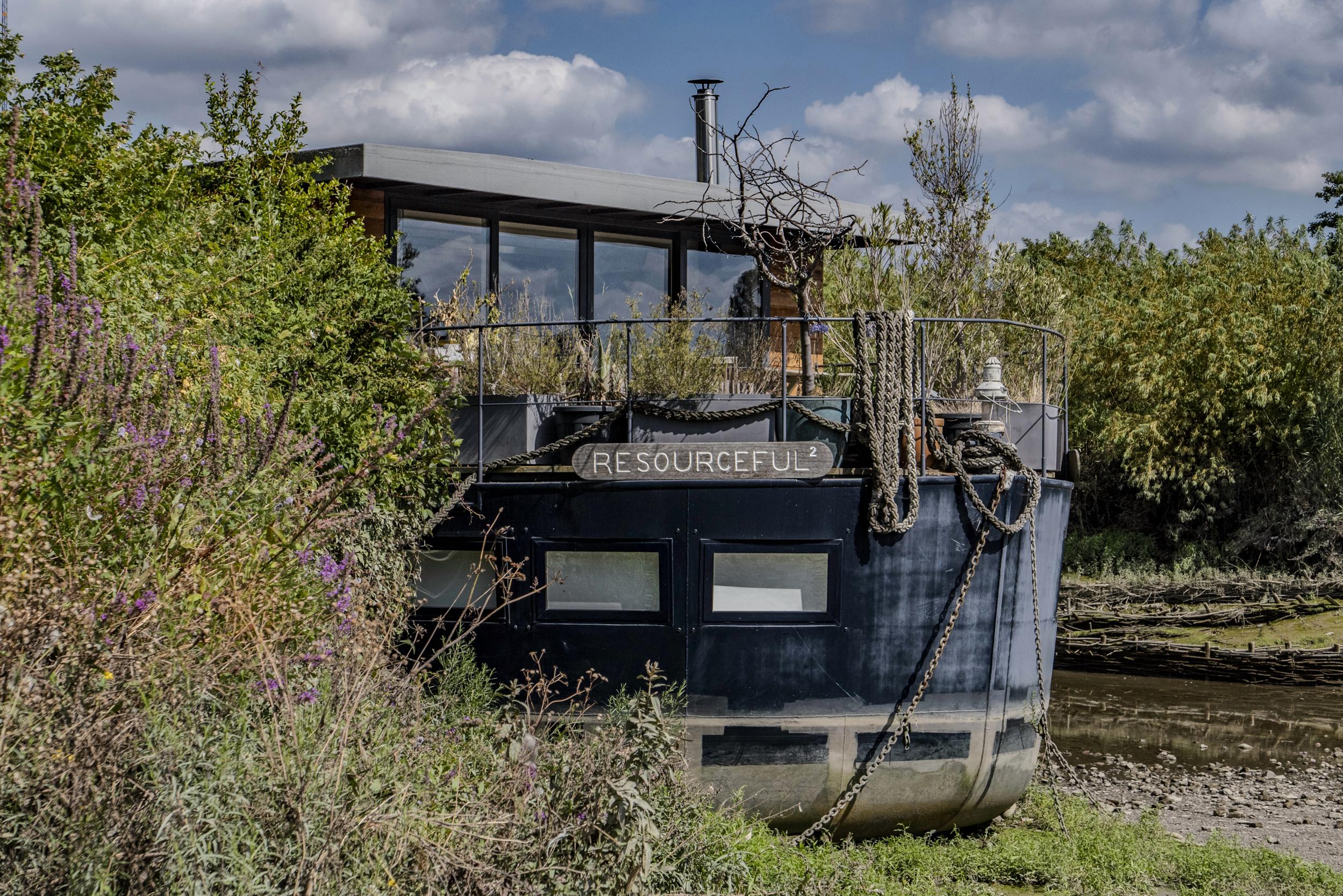
There is a small thumb hump built into the top plate, but it is rather ineffectual (in common with similar efforts on the Q and M). My ideal would be an accessory thumb grip, which adds very little weight but provides a surprising amount of additional stability. Unfortunately, such an accessory is not yet available from Leica and the effectiveness of third-party thumb grips will depend on the way in which the manufacturers get around the danger of blocking the two soft control buttons on the back of the top plate.
The Q3-style body covering is grippy and gives a quality feel to the body. While the body is more or less the same size as the D-Lux 7, the covering material (compared with the smooth metal of the predecessor) makes a big difference.
In general, the controls are intuitive and ideally placed. My sole problem concerns zoom operation, where the D-Lux 8 is decidedly inferior to the outgoing D-Lux 7.

Zoom versus crop
Unlike the Q3 and Fuji X100VI with their fixed focal lengths, the D-Lux 8 benefits from a useful optical zoom which extends the focal length from the usefully wide 24mm to 75mm (in full-frame equivalent). The full resolution is thus available up to 75mm, with digital cropping taking place from that point. The result is interesting.
Both the Q3 and Fuji tail off in relative resolution quite dramatically as the image is cropped. In fact, as you see from the table below, the pixel count of a cropped Q3 shot at 35mm is similar to the Fuji’s 40MP maximum resolution at the same focal length. This is of course because the Q3 starts at 28mm and 60MP, whereas the Fuji starts at 35mm and 40MP. This comparison continues as the crop zooms in, with the 60MP of the 28mm Leica being matched at greater crops by the Fuji.
Different route
The little D-Lux 8, however, takes a different route. The optical zoom ensures that the rather sparse maximum resolution of 16.8MP runs throughout the range up to 75mm. And the modest jump from 75mm to 90mm (to compare with the crops from the Q3) results in a relatively modest 30% reduction in resolution to 11.6MP (compared with 5.8MP on the Q3).
You could argue, therefore, that at a 90mm crop, the D-Lux 8 has a greater resolution than either the Q3 or the Fuji. Of course, we are dealing with three different sensor sizes, so the results are not directly comparable. But the objective here is to show that, because of the long optical zoom, the D-Lux 8 performs surprisingly well in this company. It is always going to be the poor relation because of the smaller sensor, but the differences are not as huge as you might imagine when it comes to capturing subjects at a distance.

Another glaringly obvious detail from the table below is that the focal range of the D-Lux is much more versatile and useful in that it offers a wide-angle opening gambit at 24mm instead of the Q3’s 28mm and the Fuji’s 35mm. When the maximum digital zoom is activated, excellent good results are obtainable from 24mm to 75mm, and acceptable results even at 150mm. While the D-Lux lens is very bright at 24mm, the f/1.7 maximum aperture soon tails off and offers f/2.8 at 75mm.
| Focal length | Leica Q3 (60 MP) | Fuji X100VI (40 MP) | Leica D-Lux 8 (17 MP) |
|---|---|---|---|
| 24mm | — | — | 16.8 |
| 28mm | 60.3 | — | 16.8 |
| 35mm | 38.6 | 40.2 | 16.8 |
| 50mm | 18.9 | 19.7 | 16.8 |
| 75mm | 8.4 | 8.8 | 16.8 |
| 90mm | 5.8 | 6.1 | 11.6 |
| 150mm | — | — | 4.2 |
No poor relation
With the most popular fixed-lens compacts sporting APS-C or, even, a full-frame sensor, it’s easy to write off the D-Lux 8 as the poor relation. How can a four-thirds sensor compete with much bigger sensors? Well, the D-Lux 8 gets a quick kick up the pixels because of the optical zoom. While the big boys, even the Leica Q3 with its full-frame sensor, have to rely on digital cropping to bring up more distant subjects, the D-Lux 8 offers full resolution at all focal lengths from 24mm to 75mm.
A 75mm optical-zoom image from the D-Lux 8 has twice as many pixels as a 75mm-equivalent crop from the Leica Q3 or the Fujifilm X100VI. This is contrary to the popular perception although, as usual, bear in mind the differing sensor sizes. As a result, choosing the smaller sensor and marrying it to a correspondingly tiny optical zoom (which would be far bigger and heavier if made for a larger sensor) does make sense after all.
The D-Lux 8 offers a digital zoom facility to supplement the optical zoom. However, this is available only when the image size is set to smaller JPG (or RAW/JPG). If large JPG is set, there is no digital zoom. Choosing medium JPGs results in a digital zoom to 105mm, while setting the JPG to small permits a digital zoom to 148mm (let’s round this up to 150mm for argument’s sake).
While this appears to be counter-intuitive as far as JPG images are concerned, I was surprised to find that the digital crop is also performed on the DNG file. The DNG crop comes up full-screen in Lightroom (similar to crops from the Q3). but the full frame is still available if required.
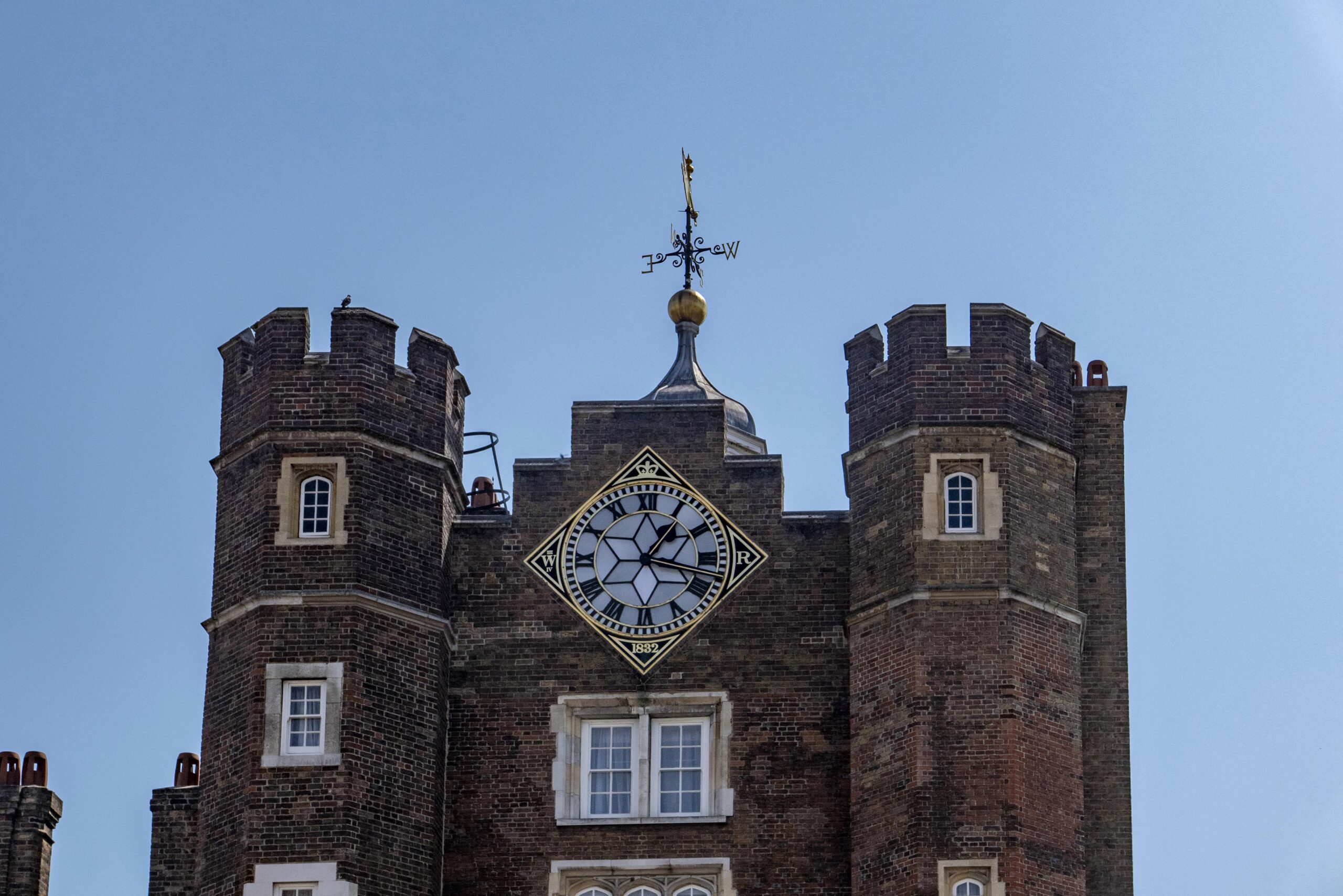

Frustratingly, this digital zoom is not offered in a menu setting. Instead, you have to use DNG+RAW settings and reduce the size of the tandem JPG. If it is set to L-JPG there is no crop zoom. Set it to M-JPG and you get a crop zoom to 105mm, while the S-JPG setting allows the maximum zoom of 150mm. I don’t pretend to understand the logic of this, but I just know it works. Many users might never find the facility. Since I almost exclusively use DNG files for processing, selecting the S-JPG is no hardship.

The ability to zoom to 150mm seems to me to be a very neat facility, and one I adopted after discovering how to set it up after a couple of weeks’ use of the camera. One professional photographer asked why anyone would even want to crop-zoom with the D-Lux 8’s four-thirds sensor. Perhaps from the perspective of the owner of full-frame cameras, this desire is a bit odd. But if the D-Lux 8 is your travel camera of choice, and the only one you have with you, digital cropping is better than nothing. As always, however, none of this is essential, since cropping in post-processing is always possible. it’s just nice to have.
Digital zooming in to 150mm with the D-Lux 8 is as acceptable as crop-zooming the image from a fixed-focal-length camera such as the X100VI. In effect, opting for 150mm on the D-Lux is relatively no more drastic in its impact on resolution than, say, a 56mm crop on the Q3 or a 70mm crop on the 35mm X100VI. As always, however. sensor size has to be considered. We are not dealing like with like.
Controlling the zoom
Control of the D-Lux 8’s zoom lens demands a full section of this review because, frankly, Leica decided to discontinue some of the most compelling control features of the D-Lux 7. While newcomers probably will not notice, seasoned users of previous D-Lux models will be extremely disappointed.
A major selling point of the D-Lux 8 is that the zoom lens allows a much more versatile approach to casual photography (as outlined in the previous section). Whether taking holiday snaps, portraits or landscapes, the ability to choose a longer focal length without compromising image quality (unlike the case with cropping from a wide-angle fixed-focal lens) is of paramount importance.
Accepting this premise, the priority of a camera manufacturer should be to ensure the operation of the zoom as intuitive and effective as possible. This is not the case with the D-Lux 8, but it was very much top of the list with the old D-Lux 7.
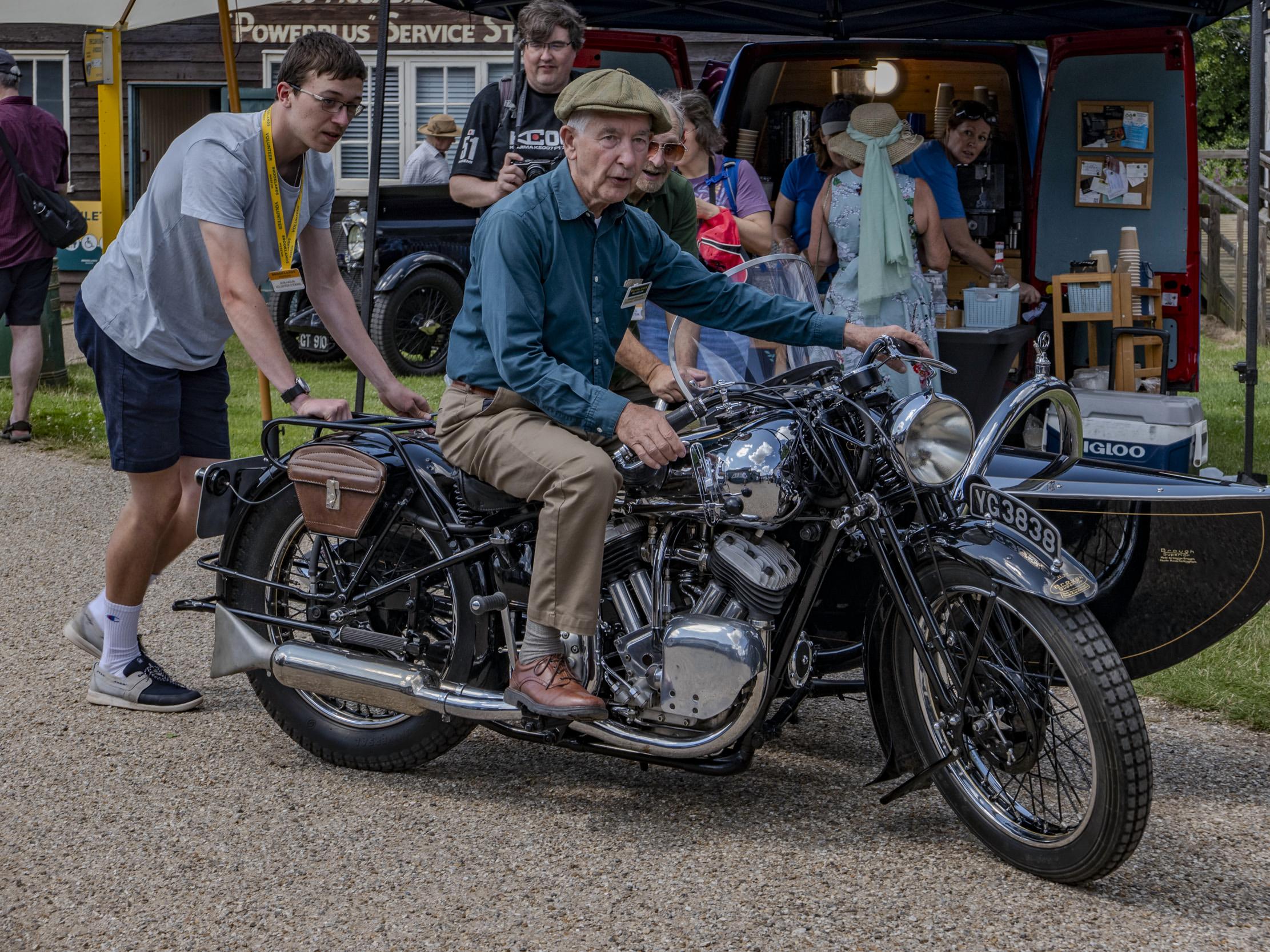
Hobbled controls
There is only one way to control the zoom lens of the D-Lux 8, and that is by using the little toggle lever which is concentric with the shutter button. It is convenient enough to find, requiring the index finder to move quickly from button to lever, but it is an awkward way of zooming. It tends to be rather wayward and awkward, and it is easy to overshoot a desired focal length.
Most photographers prefer to zoom using a lens ring with the left hand, rather than a little lever on the top plate (which is a throwback to the early days of point-and-shoot cameras). However, there is a very suitable ring on the D-Lux 8 lens, but, unlike with the predecessor, it is restricted solely to manual focus.
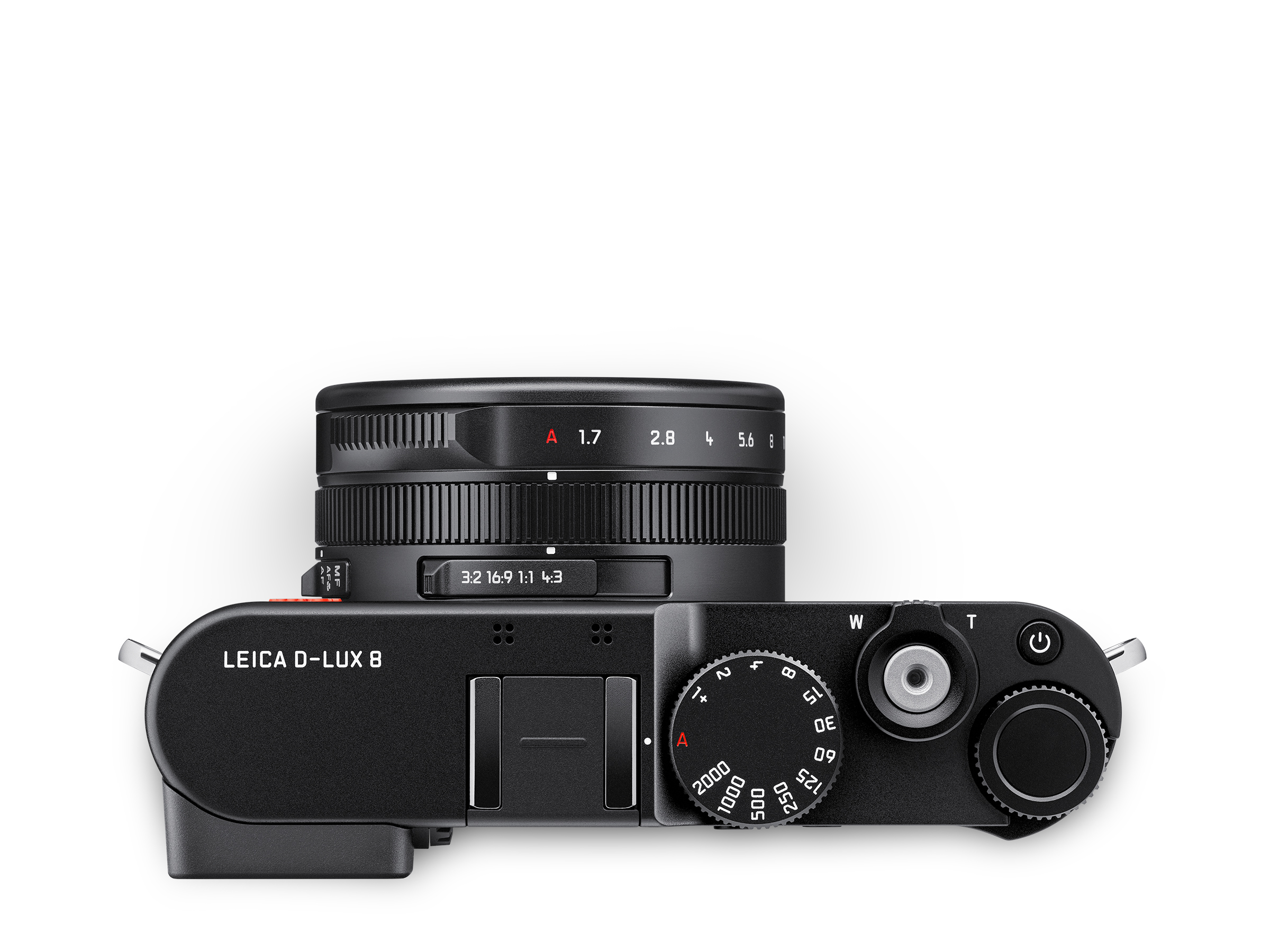
On the D-Lux 7, this ring could be assigned to zoom operation. This is transformational, and the absence of the option on the D-Lux 8 is unfathomable. Furthermore, the D-Lux 7 (and previous models) has a very neat and effective step-zoom feature. If selected, this causes the lens to jump between traditional prime focal lengths, from 24 to 28, 35, 50 and 75. And that is where the toggle lever came into its own.

The joy of the step zoom
While it is possible to set the D-Lux 7 lens ring to operate the step zoom, the real joy of operation was to use the little toggle lever on the top plate. As a control for the step zoom it was perfect (just as it is imperfect as a sole means of zoom operation on the D-Lux 8), and the focal length could be selected by muscle memory. Three clicks to the right and the lens would be fixed at 50mm, just right for the next shot.
The little toggle lever remains, but the step zoom facility has inexplicably disappeared.
Worse, the ability to set zoom resume has also disappeared. With the D-Lux 7, the zoom setting could be retained during power off, and the lens would immediately return to, say, 35mm or 50mm according to the previous setting when switched on. This has all gone. Instead, the zoom of the D-Lux 8 resets to 24mm when the camera is powered on. Disabling auto power off is the only way to maintain a pre-set zoom focal length during a shooting session.
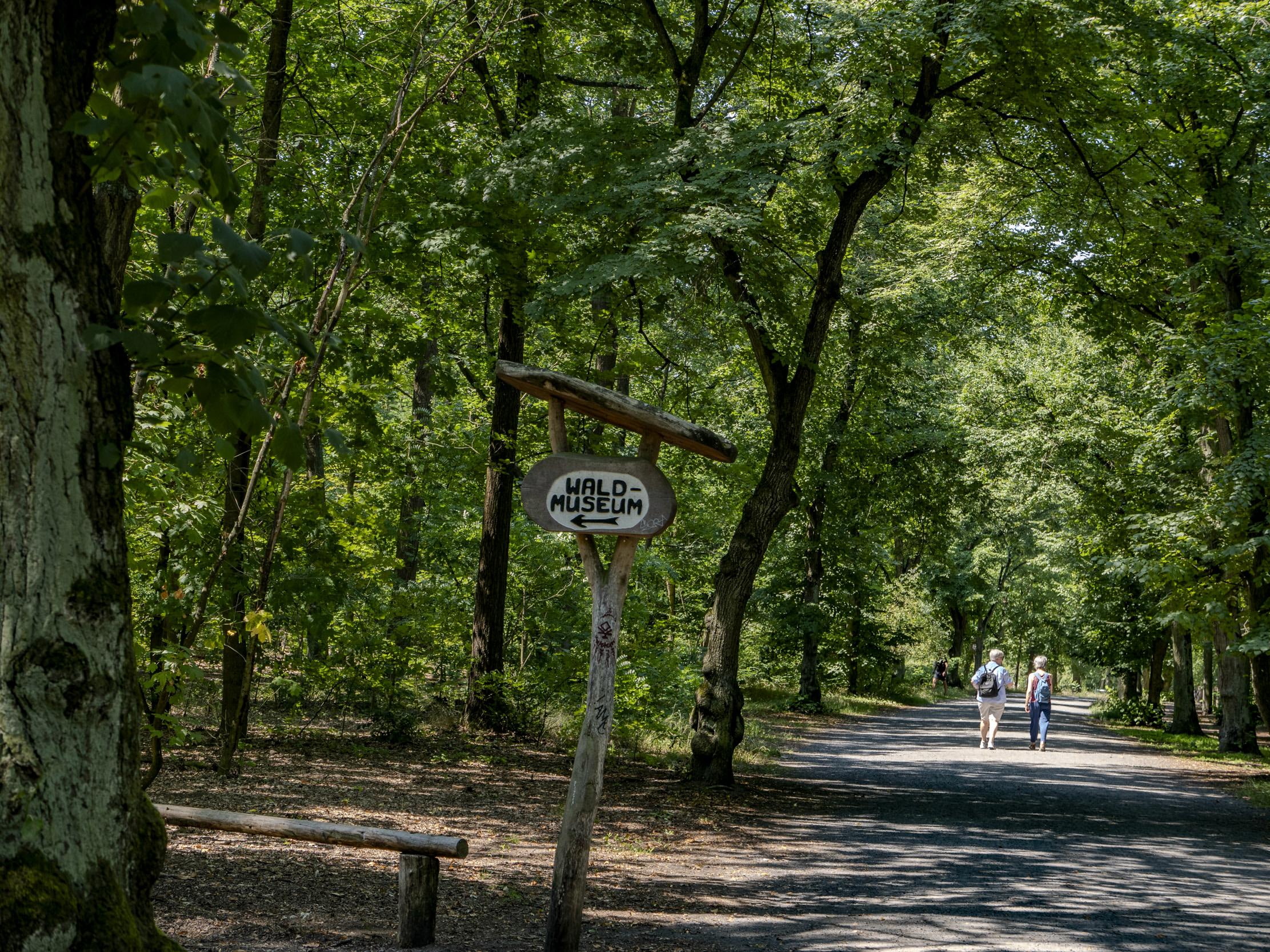
The immediacy of taking quick street shots has gone. Now it is necessary to wrestle with the zoom every time the camera is switched on. Before, with the D-Lux 7, you could set the camera up for the day, to mimic a 28mm or 35mm fixed-lens compact, for instance. The focal length would remain throughout the day and, if you wished, you could forget that this is a zoom camera and treat it just like an X100VI or Q3 with a fixed focal length. The D-Lux 8 is therefore a much diminished tool for street photography.
Leica removed all these features in the quest for “the essential” and has told Macfilos that any change is now unlikely. But in taking these steps, the designers have hobbled the zoom functions and compromised the handling of the camera. And, in my opinion, this results in the D-Lux 8 being less practical and less fun to use.

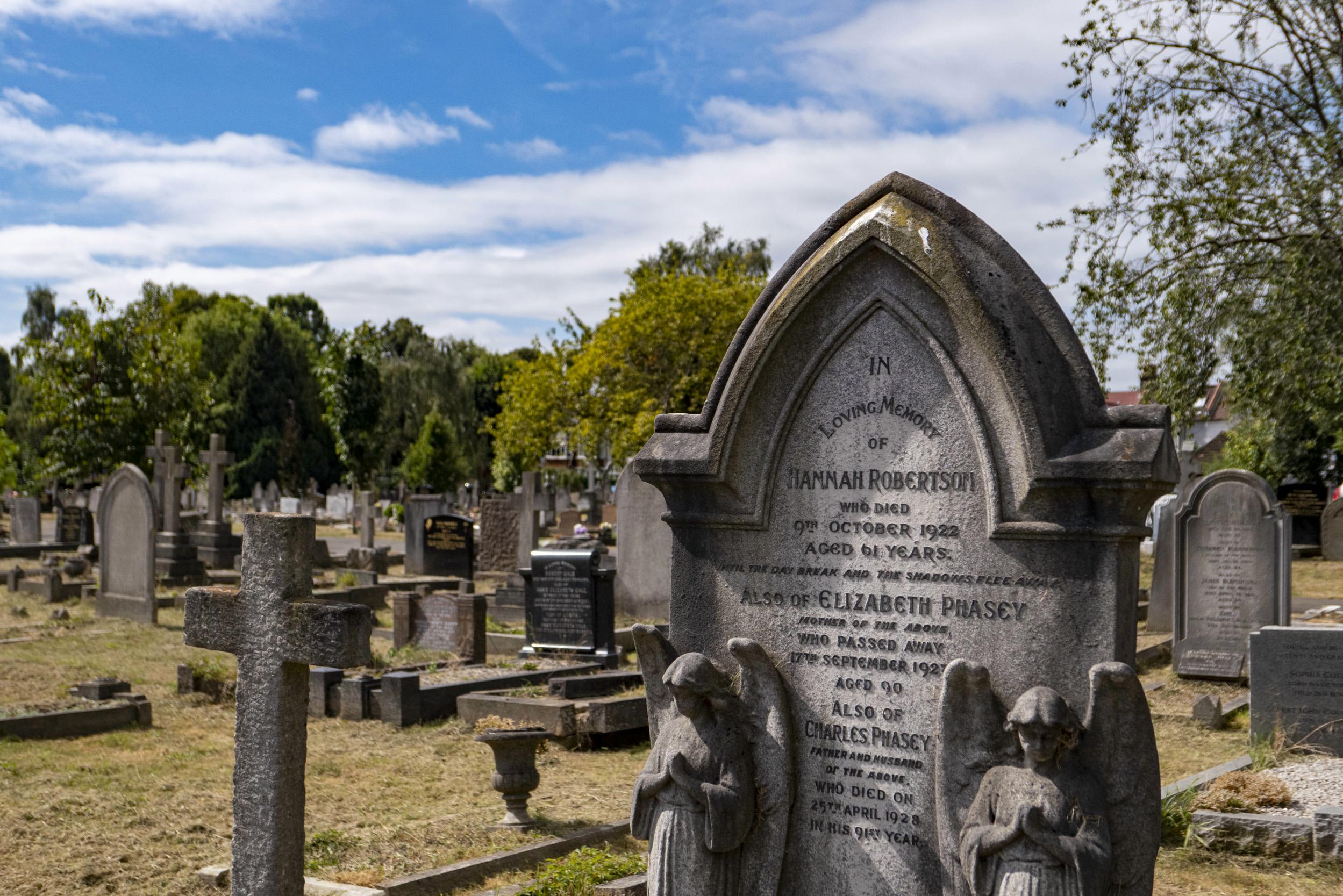

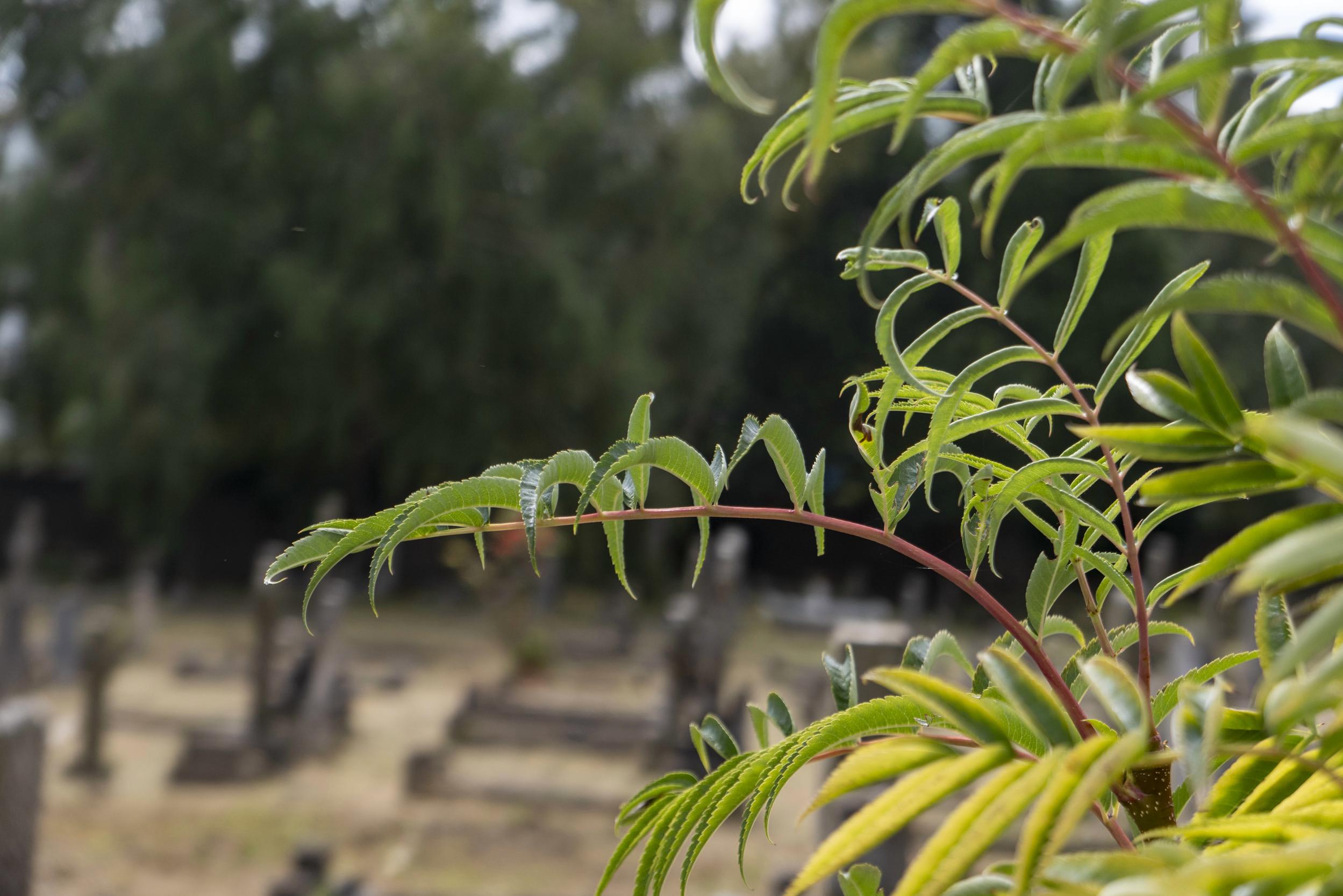

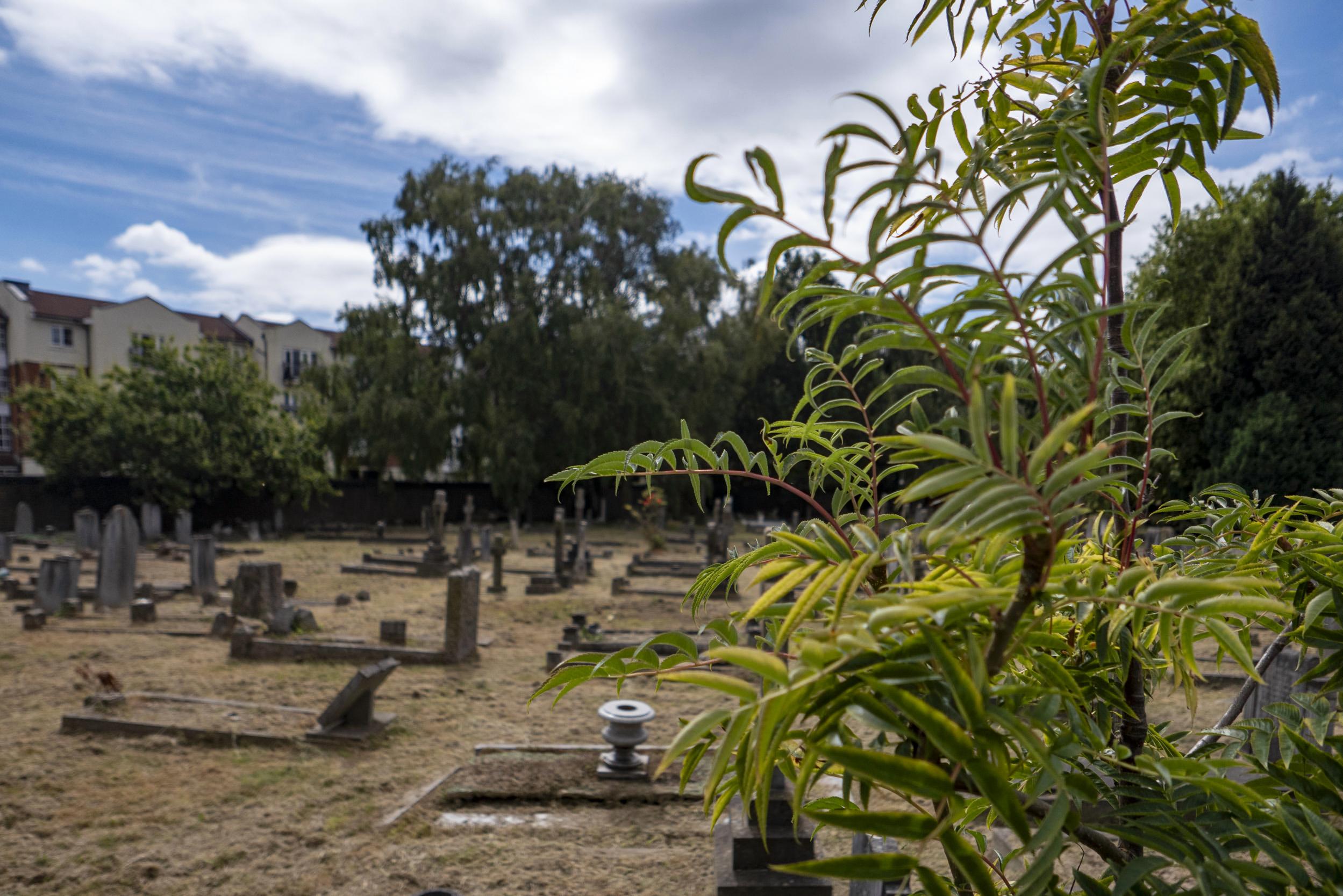
Leica D-Lux 8: Image quality
There is no discernible difference between the output from the D-Lux 8 and its predecessor, the D-Lux 7. While there could be some tweaks to in-camera processing of JPGs, I haven’t been able to compare the two cameras back to back. But in terms of RAW files (the D-Lux 8 now produces standard DNG files in common with other cameras in the Leica range, incidentally) I see no difference. The sensor is the same, the lens is the same, and there is no mention of any change to the image processor. It’s business as usual and, if you already own a D-Lux 7, don’t upgrade in the quest for better results.
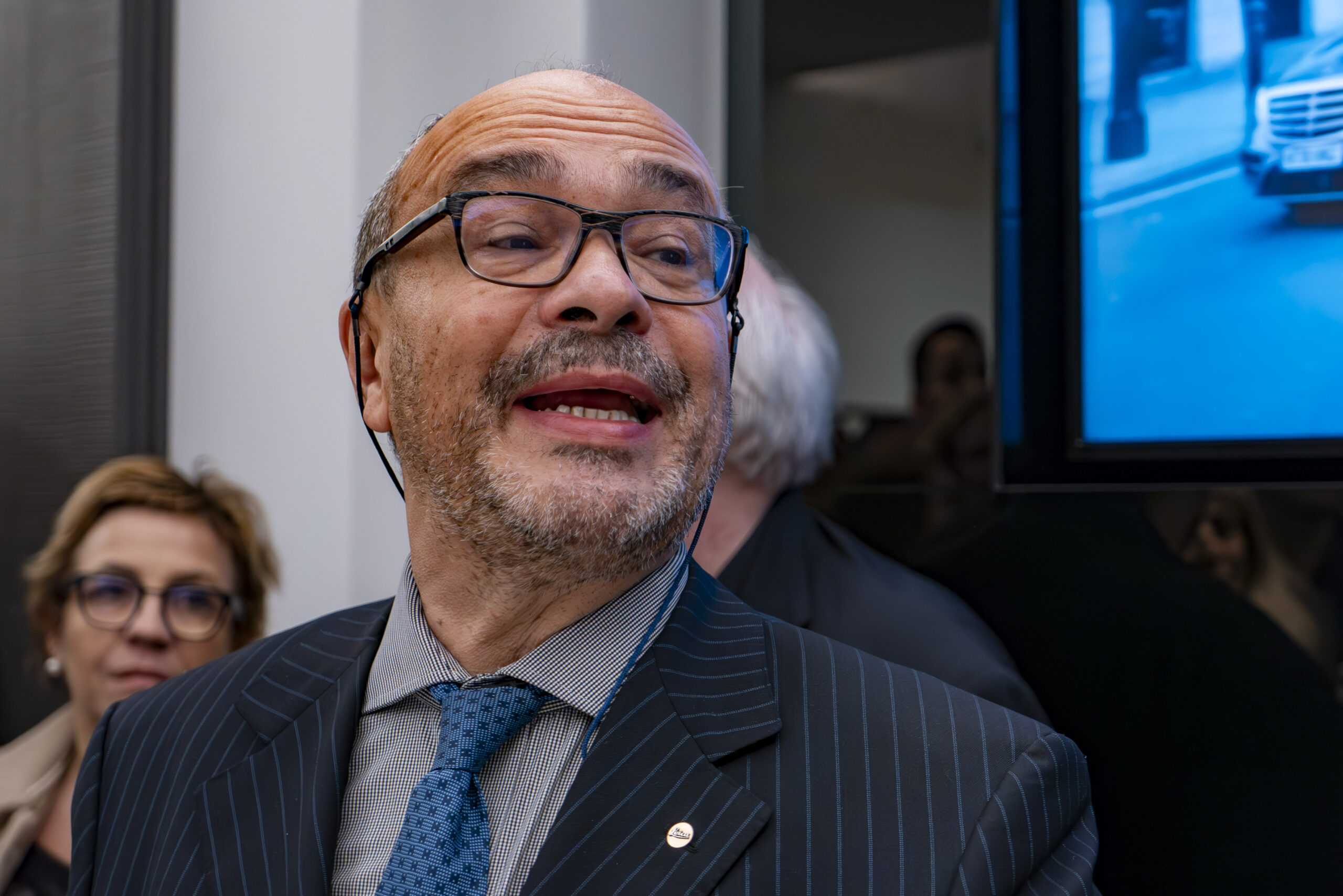
Mind you, the D-Lux models have always been strong performers and there is no implicit negativity in this lack of change. The image quality is still excellent. The lens is sharp and there is only the slightest degree of softness in the corners, irrespective of the focal length chosen. The lens is sharp at f/2 but, as usual, stopping down to f/4 or f/5.6 is optimal.
Despite the fast maximum aperture, the four-thirds sensor means that bokeh will never be as pronounced compared with a fast lens on a full-frame or medium-format sensor. But the relatively long medium telephoto lens produces some great out-of-focus backgrounds when needed. Again, as with all four-thirds sensors, the depth of field is generous.
The D-Lux 8 does well with close-up shots, which can be obtained from as near as 3cm at 24mm (and 30cm at 75mm).
Out-of-camera JPGs display vibrant, attractive colours and definition, although I do not believe they quite as satisfying to view as those from the full-frame Q3. But then, the Q3 is the crème de la crème of fixed-lens cameras, with a sensor four times as big and a resolution 3.5 times as great. The D-Lux 8 acquits itself well, nevertheless, and the results are impressive.
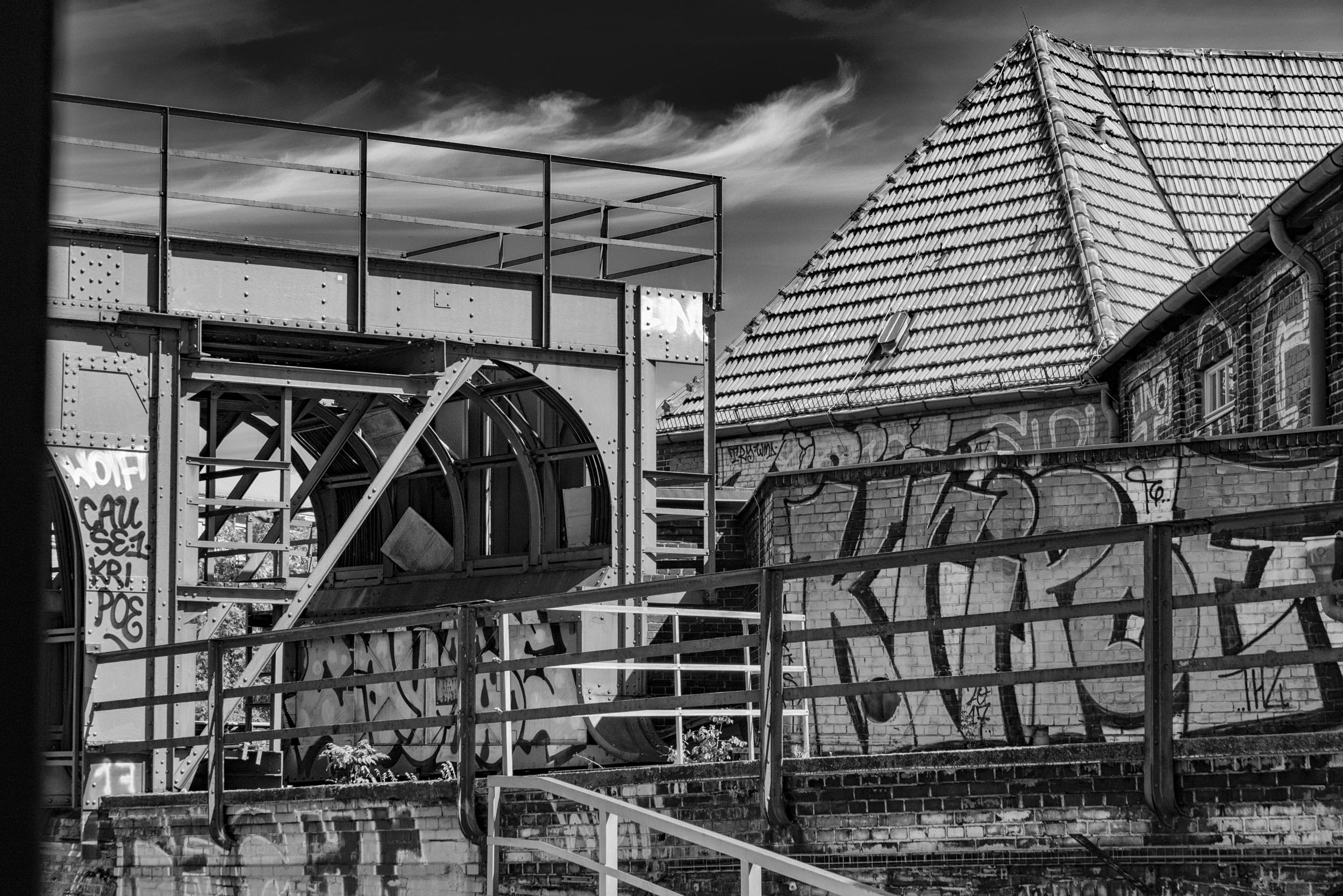
Impressive OLED viewfinder
The new OLED viewfinder is a great asset in enhancing the photography experience. It is much sharper and vibrant, and gives encouragement that the resulting shot will be everything you expect. It is one of the outstanding improvements over the D-Lux 7 and really does allow you to visualise the image as it will appear later.
According to the specification sheet, contrast detect autofocus on the D-Lux 8 has been improved, and it is certainly snappier than on the old model. It is accurate, especially with static subjects. Face and eye detection work well. However, overall, the AF performance is not quite up to the standards achieved by more modern hybrid systems which incorporate phase detection to assist focusing when tracking moving subjects.
All in all, if you were happy with the output from the D-Lux 7, you will be equally delighted with that from the D-Lux 8, but you will enjoy the process of composition more because of the vastly improved EVF and the better handling.
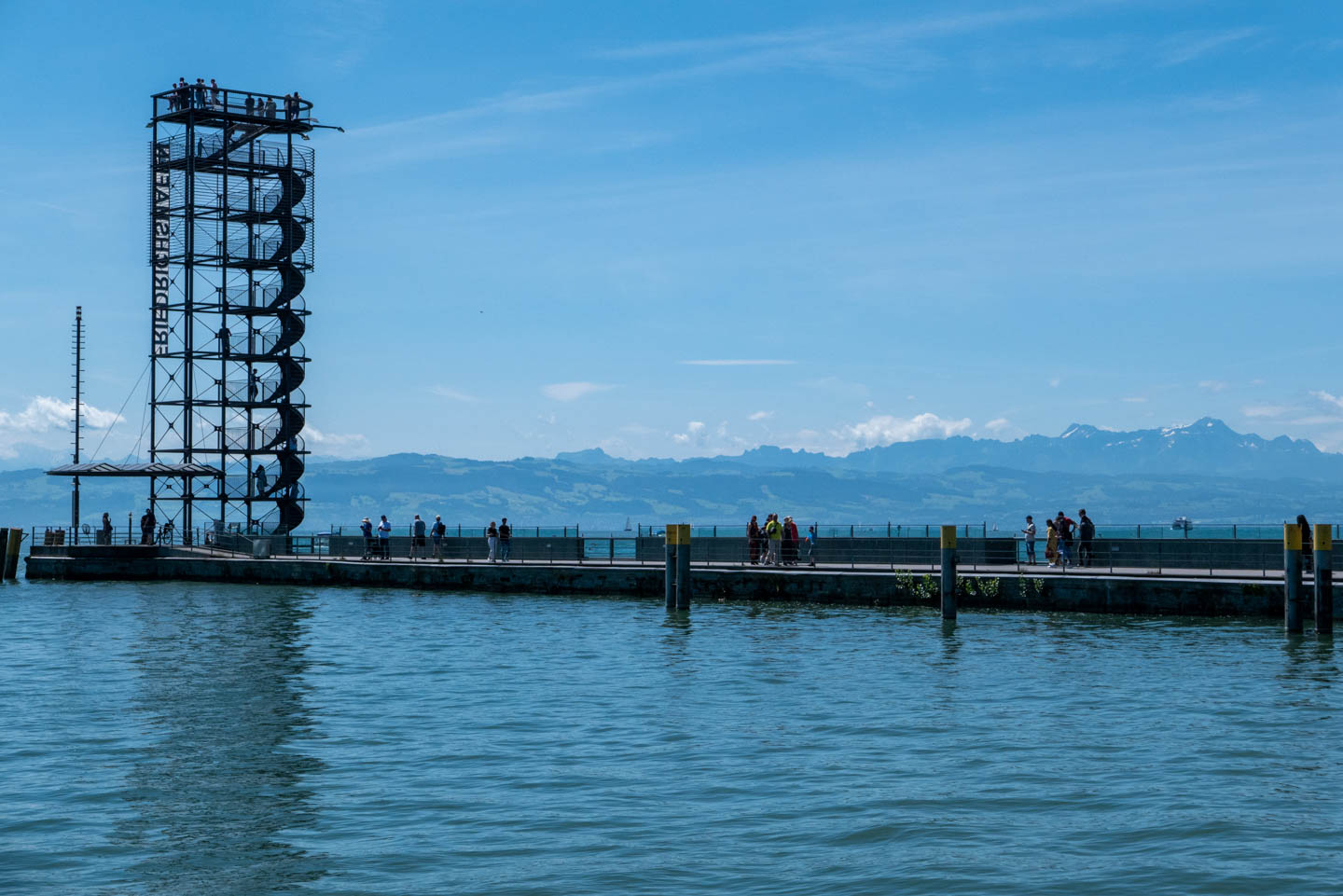
Leica D-Lux 8: Conclusion
The D-Lux 8 is a big improvement over the D-Lux 7 in terms of appearance, menu layout and the adoption of simplified Leica-style controls. It is now a true member of the Leica family and no longer to be written off as a rebadged Panasonic adaptation. If this is all you want, then the D-Lux 8 is a great compact camera, with the optical zoom helping to offset any perceived inadequacies of the small four-thirds sensor. But you will not take better photos than you did with the D-Lux 7, since lens, sensor, and processor are all the same.
The Leica DC Vario-Summilux 10.9-34mm f/1.7-2.8 ASPH lens is extremely sharp and performs well. It helps compensate for the shortcomings of the four-thirds sensor by providing full-resolution shots up to 75mm.
I am very much in two minds about this camera. I wanted to like it, and I bought it at full price. In general, I do like it, but I do have concerns.
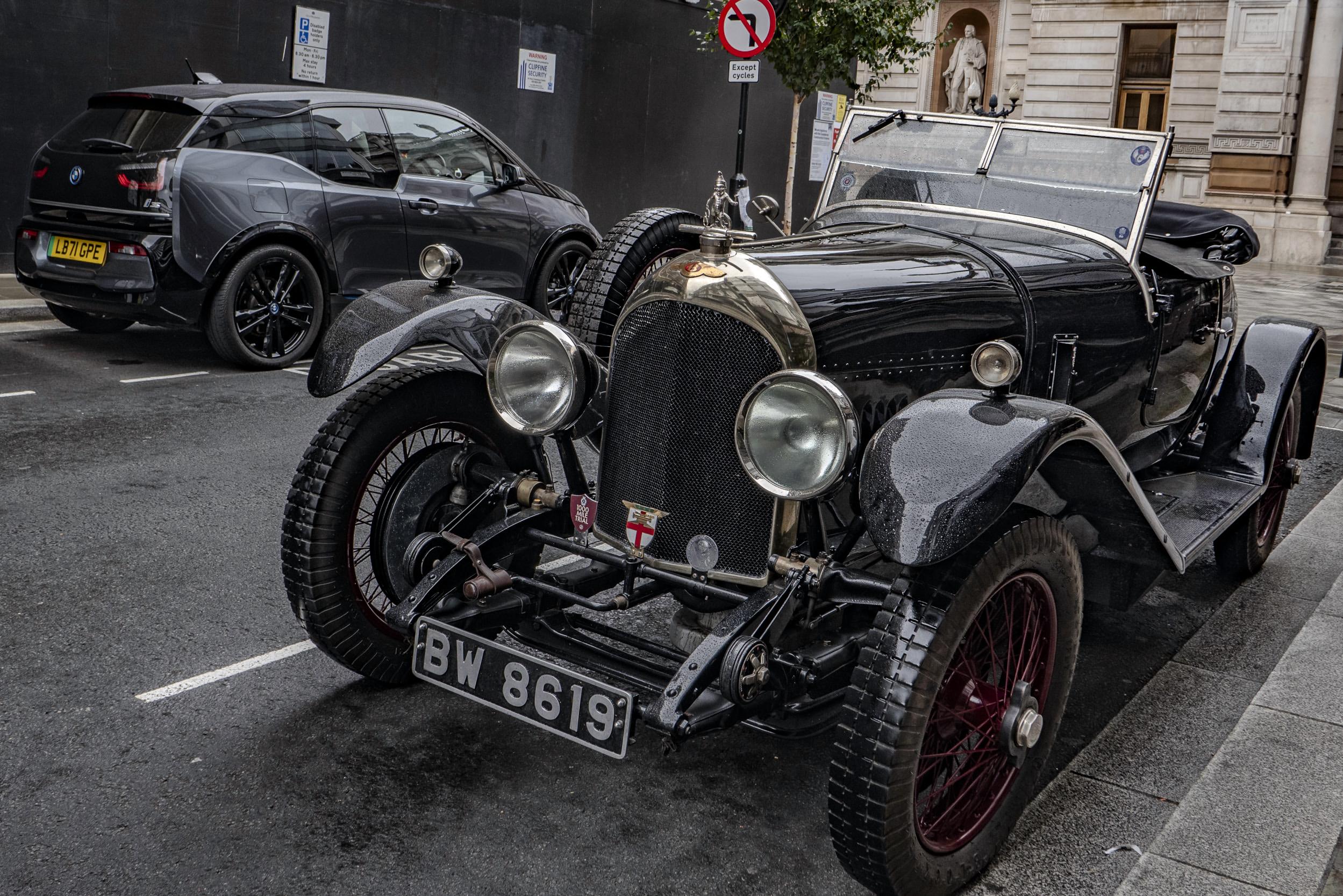
If you are a casual shopper strolling past a Leica boutique, the D-Lux 8 will catch your eye. You will see it as a true entry into the rarefied heights of Leica ownership. You will accept it for what it is, and you will be delighted with the camera. On the other hand, if you are a long-standing Leica user — perhaps even a regular reader of Macfilos — you will be disappointed by the compromised zoom control facilities. You will miss the ability to twist the lens ring to control the zoom.
But you will like the ability to use the combined optical/digital zoom to 150mm (if you can find it because it doesn’t appear in the instruction manual, nor in the camera menu). It effectively mimics the crop facilities on fixed-focal-length compacts such as the Q3 and X100VI, but starts at a full-resolution of 75mm instead of 28 or 35mm.
Nevertheless, you will certainly miss the nifty step zoom facility which has always set the D-Lux apart from its competitors, and which I considered to be nothing less than the bee’s knees of an idea. While you will admire the new appearance and the user interface, inevitably you could begin to compare the D-Lux 8 unfavourably with the D-Lux 7.
Indeed, you might well conclude that, in titivating the D-Lux 7 to produce the spiffing new “essential” D-Lux 8, Leica has managed to throw the baby out with the bathwater. Please, Leica, reinstate sensible zoom controls if you are going to impress experienced users. To consider them inessential in a zoom camera is at best careless.
Leica D-Lux 8
| THE GOOD | THE BAD |
| Gorgeous Leica looks | No tiling screen |
| Simple menus, easy to understand | No step zoom |
| Optical zoom compensates for small sensor | No zoom-resume feature |
| Behaves like other models in the range | Toggle zoom lever is unsatisfactory |
| Great travel companion | No zoom assignment for the focus ring |
| Excellent image quality | 17MP effective resolution now dated |
The images in this article are from RAW and processed to the author’s taste, but your taste may vary… All D-Lux 8 RAW files are now standard DNG as on all other Leicas (rather than Panasonic’s proprietary format used on previous D-Lux models).
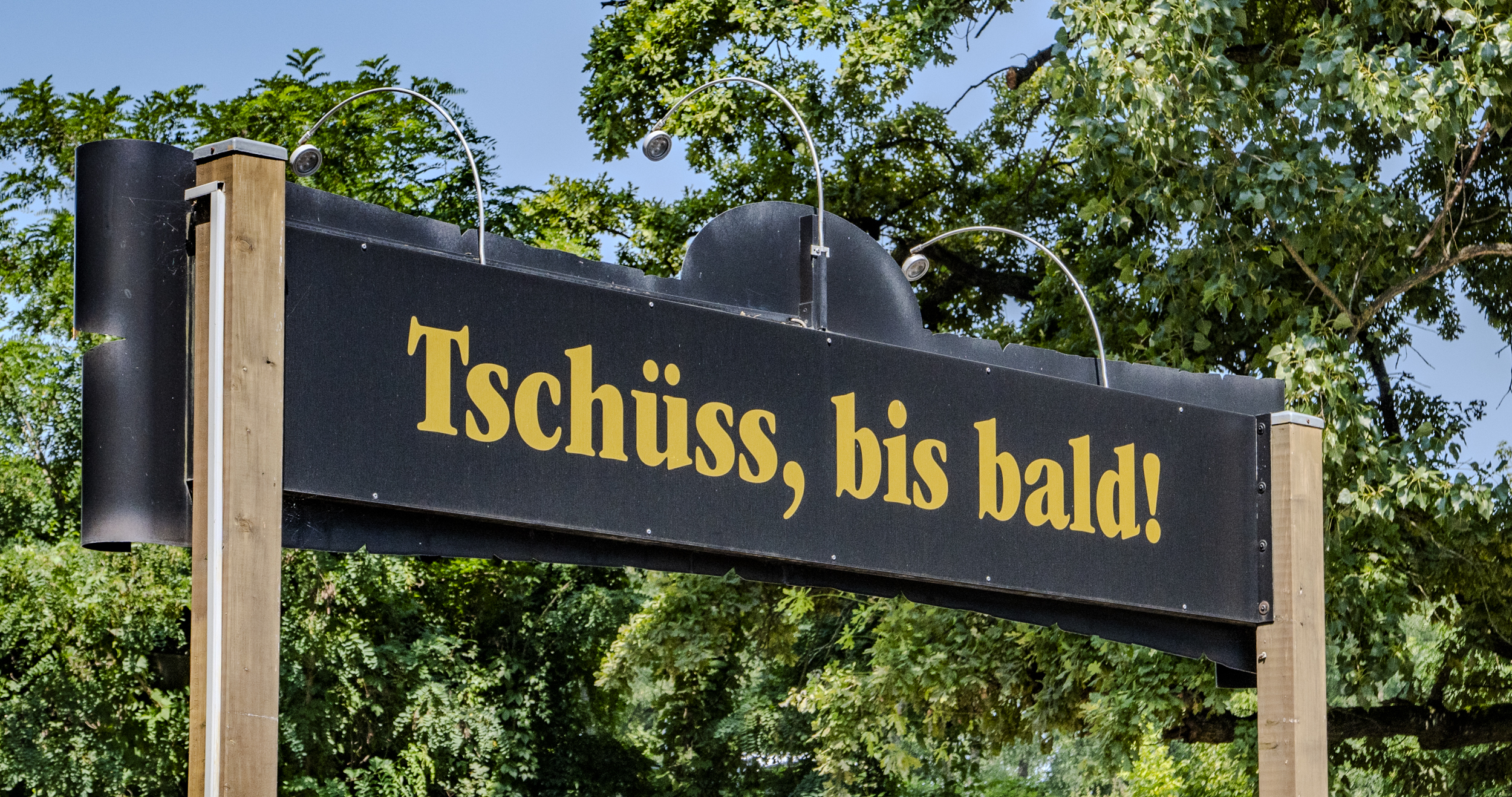
Want to contribute an article to Macfilos? It’s easy. Just click the “Write for Us” button. We’ll help with the writing and guide you through the process.

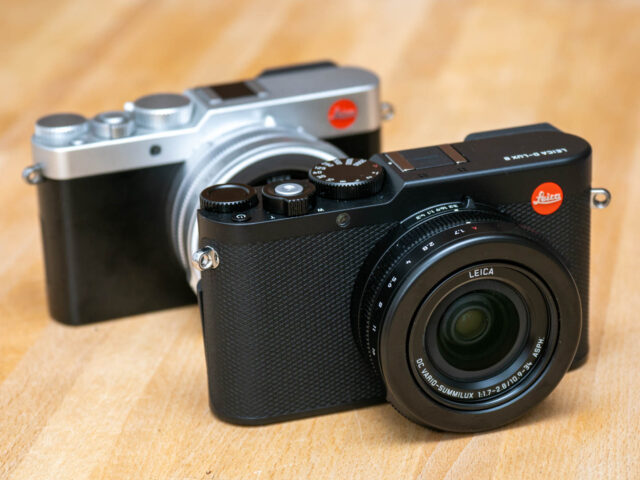
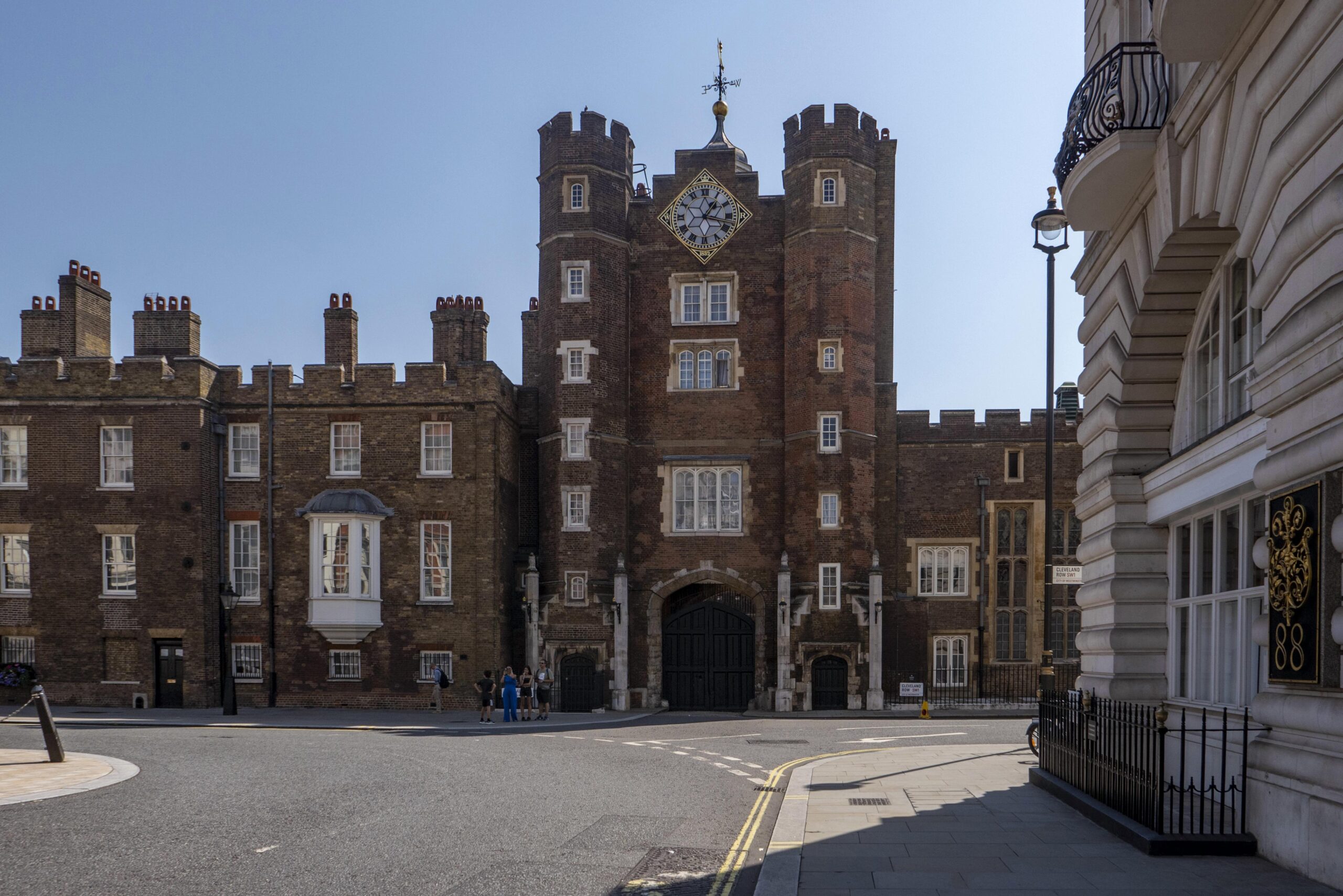



Thanks for a great review!
I’ve been a fan of the Panasonic LX series since the first one and also owned several iterations of D-Lux. My 109 was given to my sister years ago and my D-Lux 7 was sold to fund the Q2. So I was really excited to see Leica reviving the line with D-Lux 8.
I tried the D-Lux 8 at my local Leica store last week and noticed the absent of the zoom functions right away. I loved using the ring for zooming and step zoom was my main method of composing the shot. I also miss the power switch near shutter speed dial.
Despite the much nicer build and controls, I will not rush to buy the D-Lux 8 until Leica fixes the zoom function and sort out the firmware.
I think many people are taking the same view. Anyone already owning the D-Lux 7 would be ill-advised to upgrade I am hoping that Leica will see sense and seek ways of reinstating the zoom controls. They could have removed video and there would have been less criticism, I believe.
I have the Type 109 DLux. I was initially not really happy with the colours of the RAW files (I use Lightroom to process after Apple Aperture was abandoned). So I created a custom profile using one of those small colour charts. After that it was great but a bit annoying I had to spend money on the colour checker. How have you found the colours of the DNG files
Tom,
I thought the DNG files are good, a bit more vivid than you sometimes expect from RAW. During the processing stage, I made no colour adjustments and, overall, I am happy with the results from the camera.
Great review of the D Lux and so much more useful detail than I’ve seen in other places. I really like the camera and was sure I would get one but now I’m thinking about that zoom. I remember the zoom controls from my old D Lux. I’m not too bothered about the step, but i really would miss not being able to twist the lens ring to zoom. I can’t think why they consider it so disposable.
Hello Mike. Thanks for the review. I always think that the reason Leica menus are simpler is that you can’t change as much as you can with other cameras ! But yes – Fuji’s are particularly obtuse.
Edward,
Ah…you may have a point there. I suspect some photographers might take an opposing view, complaining that the Leica system isn’t flexible enough. The X100VI menus are a masterpiece in obfuscation. I particularly dislike the habit of using condensed capitals in ever decreasing font sizes when the description is too long for the space: For instance, INTERVAL TIME SHOOTING EXPOSURE SMOOTHING, whatever that is. I have to put on my reading glasses, and even then, it’s a struggle. I have no such problems with Leica’s system, even on the smaller screen of the D-Lux 8.
These days I need a longer strap … so I can hold the camera far enough way to see the numbers on the dials….
Hi Mike, one thing you did not mention is the fact that Leica have a UVa II E43 filter for this lens. Yet there is also an Auto Lens Cap, probably designed first at Panasonic for their Lumix DMC-LX100. and D-lux 7 later.
The problem is that both UVa II filter and auto lens cap can NOT be used together because of the width of the filter. Not very clever as both accessories have their benefits.
Yes, I realise I didn’t mention this. I don’t like the appearance of the auto lens cap, so that’s out as far as I’m concerned. I have 43mm filter (actually Zeiss, not Leica) so have this in place. Incidentally, in case anyone is wondering, I also tried a circular vented hood (43mm) which I happened to have it a drawer. It looks good on the camera but, unfortunately, causes severe vignetting at 24mm. So that’s out also!
there is a third party auto lens cap made by jjc. this one is deeper and works with a filter. I use it with a k&f 1/8 mist filter. you can get it on amazon. it’s also much cheaper than the original.
I’ve used and loved D-Lux models for over ten years, starting with the small sensor and moving on to the four-thirds as soon as it was available in the market. I agree that the image quality is excellent and those who criticise it for not having an APS-C sensor (like the Fuji or Ricoh) are completely missing the point — that the optical zoom helps overcome any small-sensor shortcomings if cropping the image. You have done well to point this out, and it is often overlooked by reviewers.
Thanks for an in-depth and comprehensive review, Mike, which puts some bigger sites to shame. And thanks for helping demonstrate the image quality with your excellent and varied photographs. Great job well done!
First class review, Mike, with the sort of detail that is missing in so many articles on this camera. I was keen to buy one and hoovered up numerous video reviews on YouTube. Many of them were so superficial and treated the D-Lux 8 as thought it were a wholly new wonder camera. I did not find another review that mentioned the missing zoom controls (maybe few had ever seen or used the D-Lux 7 or LX100 II). Yours is the only coverage on what is surely the fundamental aspect of the camera.
All these glowing testimonials from (I presume) photographic and technical “influencers” may well fool some of Leica’s fashionista customers, but they don’t fool experienced photographers. Leica has missed a big trick here, and I shall be keeping my D-Lux 7 which, thanks to your review, I have dusted off, and I am enjoying using again. I will take another look when Leica caves in and reinstates the step zoom and other proper zoom controls.
What an excellent review. Great stuff , Mike.
Without being able to use one, I can’t add too much. But one thought that does strike me is that the shift to DNG for an all-purpose travel/on the go type camera makes a lot of sense. Most phone editing software options can deal with DNG RAWS , so being able to edit your RAWS to suit in the field with nothing more than a phone seems a logical, useful property. My Pentax Dslr offers the same advantage, but of course it’s not a compact camera option so it’s somewhat lessened as an advantage.
After reading the comments my conclusion is that Leica, with the D-Lux 8, is caught between offering a “starter” camera while retaining something more capable. With the rest of the D-Lux line and the CL no longer in production Leica made some compromises to offer an in-between camera, enticing new customers desiring to move beyond their iPhones, and also offering a suitable travel or backup camera to those already in the Leica fold. Having features that an iPhone user would readily adapt to may not be appealing to the “Wesentiche” philosophy of those accustomed to an M-camera. It might not matter much if there were alternatives, but the D-Lux 8 is now the only compact and less expensive camera in their line-up. I own a CL, but if I didn’t I would be more inclined to purchase a used Leica CL, and for not much more expense, than buy a new D-Lux 8.
Or a D-Lux 7!
Yes, D-lux 7 or CL are both actually far better choices than the current option – Dummilux-8. 🙂
Well, some people are calling it the Baby Q. From a marketing point of view Leica might have more success with the 8 if they had actually used that name on the product. Missed opportunity to cash in on the success of the Q?
Hi Mike, excellent and ver complete review.
After 2 weeks ownership I am very happy. Okay FW 1.0 is a tad buggy, battery life could be better but for the moment it is only the power button I dislike. I keep the camera in a M soft case so when I grab the bag sometimes the zoom lens tends to ejects.
Also the Leica hand grip seems a bit too small for my average hand. A bigger thumb support would also be better. Lets see if Match Technical comes with one.
Implementation of FOTOS is how it should have behave on my old CL (which was a disaster).
In the family we have a Q3 and i see so many resemblance. So at the end this is a lovely baby Q3. Mind you for only a quarter of the price.
PS I am not so negative on the ‘zoom’ as I did not own a D-Lux 7.
Cheers from the Netherlands
Glad you are enjoying the ‘8. Despite the criticism of the zoom functions it is a nice camera. But I cannot understand why they deleted the zoom functions. It really makes no sense. With step zoom and lens zoom they would have sold twice as many cameras.
No step zoom + no zoom ring + no zoom resume = no purchase by me. Leica have hobbled this camera to an extent I find hard to fathom. They’ve removed its very ‘essentialness’.
Agreed.
Thank you for an excellent review, and I am certainly impressed with the image quality. I also enjoyed your test of the Fuji X100VI. But here’s what is probably a dumb question: I notice you often photograph the same subjects, such as that houseboat. Is there a reason for this?
Thanks, Andy.
There is actually a reason for using the same scene in different camera reviews. The photographs act as a reference point and a means of comparison. I think many camera and lens testers have their favourite subjects. It’s also useful for anyone writing reviews, since they can go back to see how a particular subject appears in previous reviews. In my case, I have a regular stomping ground where I go out with a new camera and tend to shoot the same scenes. It helps me, and I hope it helps readers.
I think it is useful to see some similar shots to compare. But you certainly got around with the camera in order to complete this review. I like the pictures from my country particularly. They make me want to pay another visit to Berlin. And you are accurate in this history of the Ampelmännschen. They were a unique feature of DDR streets, while the west used the standard boring graphics. It’s good that the city commemorates at least some part of the DDR in this way.
Well I had an LX100ii and it never stopped sucking crap in via the extending zoom lens.
Cost me AU$250 every time to have it cleaned, after two cleans off it went on Ebay. Good riddance. I guarantee Leica have not fixed that problem.
Thanks, Mark. I have read about this problem, but never experienced it on the (I think) four D-Lux models I’ve owned. I wonder if it is more prevalent in dustier climates than ours here in the UK. It’s good of you to highlight this, however, although it isn’t something that would normally come to light or be mentioned in a new camera review.
A truly excellent review, the best I have seen, that highlights all the things that matter. Well done Mike and thanks for creating the article and all the work that went into it.. Lovely photos too, that really show the resolution and capabilities of the lens (unlike just about every other review I’ve seen). Anyone thinking of buying this camera needs to read this and I hope they visit Macfilos and do so.
Personally, I’m looking for a compact to supplement my SL equipment but sorry to say, as much as I wanted to like this camera it checks off all the don’t buy/danger boxes for me. 1. No way to set the focal length or focus point would drive me absolutely crazy in practice. 2. Poor battery life ( and I really don’t get this in these days of all-day-battery phones).This is unfortunate because from what I can see from your images the lens is plenty capable with good color and resolution. If only Leica will fix the zoom setting problem with software ( Isn’t that what software updates are for? ) I’d probably purchase one and put up with the other things. Oh, how I wish you could set the focal length on the lens ring like a proper zoom lens. Imagine how frustrating a Leica SL3 would be if you had to use a powered zoom toggle to set your focal length every time you wanted to take a photo.For a company like Leica that is all about photography it is baffling that they can’t see the problem here. They must be looking through the wrong end of their Ultravids.
Thank you, Stephen. It is nice to have all the work appreciated. The review was many weeks in the making. And as both Keith and Jörg-Peter will confirm, I had several cold-feet sessions and there were lots of last-minute adjustments. What I find most frustrating about this camera is that its primary feature, the zoom lens, is so restricted in use. For instance, the brilliant step-zoom feature which mirrored all the rangefinder focal lengths was masterful and appeals particularly to established Leica users.
I dunno, Mike. Why use this camera if you dislike the zoom facility – or lack of what you want from the zoom – so much?
Several years ago I bought (..’slightly foxed’ as they say of books..) a slightly scraped-on-the-bottom 2nd-hand Lumix TZ100. [Like the Leica, but a slightly different Panasonic model.]
What’s it got which you may like?
1 A control ring around the (25-250mm equivalent) zoom lens. (And it does NOT have the frame-format switch – 4:3, 16-9 etc – which you dislike so much: different Aspect Ratios can be found in its Menu ..but can also be programmed to a Function button.)
2 In a Menu you can set that round-the-lens ring to be for Focus, or for Zoom (along with or instead of the little zoom lever which you so dislike), or for Step Zoom – which is exactly what you want!
3 You can also set-&-forget (in a Menu) Zoom Resume ..which sets the lens to automatically return to the last-used zoom setting when you turn on the camera.
This seems, to me, anyway, the ideal pocket camera for you. It’s the same size as your much disliked D-Lux 8. It has a better zoom range. It can ‘Step Zoom’. It can automatically return to the last-used zoom setting. It has a great viewfinder, and a (fixed, non-movable) bright rear screen. It can automatically swap between finder and rear screen, but it also has a button next to the finder for choosing which finder or screen ..like your much-scorned D-Lux 8.
The ring around the lens can also be configured for just about anything instead of Zoom or Step Zoom ..for example Aperture, Exposure Compensation, ISO, White Balance, Filters, Highlight and Shadow adjustments, your much-derided Aspect Ratio, With Milk or Without, or pretty much any other setting imaginable. Set It & Forget It.
It’s a ‘LEICA DC VARIO-ELMARIT 1:2.8-5.9/9.1-91 ASPH’ (..there you are; the full works, including those precious LEICA and VARIO-ELMARIT names..) lens. It’s not a 1.7-2.8 lens, but you get the same look as an f1.7 by just zooming in a bit to blur backgrounds or get ‘selective focus’.
It’s got the old-style micro-USB socket (for charge and transfer) and a chunky 770mAh battery. It really is everything you need or want. (I think mine was £250, used.)
It’s a 20 megapixel camera ..so no cropping needed to get, say, a 135mm or 200mm equivalent ..as it’s 20 megapixels at every focal length.
It thus beats all three cameras on your focal length / number of pixels scale, above. According to your scale, the D-Lux 8 is a 4.2 megapixel camera at 150mm. [That means you’ve effectively thrown away 12.8mpxl of the 17mpxl you’ve actually paid for.] But the TZ100 (called ZS100 in the $tates) is a 20 megapixel camera at 150mm ..and all the way up to 250mm! (My close-ups of Harrods Depository at 64mm [175mm equivalent] are terrifically detailed, and are, of course, also 20 megapixel shots.)
So for a pocket camera which has the requisite ‘LEICA’ name on the front, which is more versatile than the D-Lux 8, which has a Step Zoom ring – and (optionally) returns automatically to the last-used zoom setting – and every shot is a 20 mpxl shot – (oh, and costs just a teeny bit less than a D-Lux 8) I don’t think you could do better than a TZ100 ..unless, of course, you choose a (dare I mention the word?) ‘Sony’ RX100 MkVI.
Why continue to torture yourself with a camera which just doesn’t zoom the way that you want it to zoom? D’you want to borrow it?
All best wishes,
– David.
Dear David, I was just thinking you had been unusually quiet since this review was published. And thanks for the tour round your groaning shelves. Fortunately, I have a good response in that I was reviewing the new Leica D-Lux 8, warts and all.
The lack of zoom control is an inconvenience and let’s hope Leica can do something about it. But the camera is nice to handle and fits the hole in the range for a lightweight, relatively inexpensive starter.
Of course there are other cameras out there that probably do a better job. But it you want to stay in the Leica family it’s not a bad choice.
B-b-b-but “..relatively inexpensive starter..” ..at £1,450..?
..why, I’ve bought cars cheaper than that. I bought a 65 foot self-propelled barge cheaper than that! Someone I know bought a Gertrude Shilling hat cheaper than that!
(Of course, neither the barge nor the hat had a zoom ..but you can’t have everything at less than £1,450.)
Yes maybe a barge is more sensible. But £1,450 for a Leica is positively frugal.
B-b-b-but David, The TZ-100 doesn’t have Leicons and an easy menu system and it doesn’t have a warranty because it’s not new and it’s not as cute or grippy as the D-Lux 8 and Micro-USB connections almost always suck…what are you thinking? 🙂
Joking aside, that’s not a bad option as long as you can still get that chunky battery!
Just type into Google “panasonic BLG10E battery” and you’ll find scores of sellers offering that genuine battery, brand new. Plus many outfits selling far cheaper identical fit batteries – and higher capacity, e.g: 1050mAh instead of Panny’s 770mAh – so batts are simply not a problem.
If you’re unsure about availability of something – e.g; any specific battery – just t-t-t-type it into Google, no? And if you don’t know the type or name of, say, a battery for any particular camera, why not just type, say, “specifications Panasonic TZ100 camera” into Google, scroll down to Panasonic’s own website, click on ‘Specs’ and there you’ll find a picture of the battery and its product number: DMW-BLG10E.
It’s so easy to find out almost anything about almost anything with just a few clicks..
Very fair, very thorough, and indeed entirely excellent review! Particularly admirable are the interpolated corrections where necessary! Thank you very much.
Thank you, Art. Much appreciated
I agree with other commentators: a very thorough, balanced review (with great photos). One of the qualities we love about MACFILOS.
As a Typ 109 user, two points: yes, I would miss the step zoom with memory. No, I would not miss zooming by focus ring; as an M user, I use focus rings to focus. Odd, anachronistic, I know, but there it is. Perhaps a better way to put it: I enjoy the D-Lux because I can control it exactly as I would an M.
The other point is a question. I found the Typ 109 great in its ability to pull data from shadows. What has been not-so-great is high ISO performance (and AI has been an inadequate solution for me). I’m wondering whether the better pixel count on this sensor has seriously improved high ISO?
Kathy, thank you for your kind comments. I seem to remember that the zoom on the focus ring could be set to operate only with autofocus. So it can be used for focus in MF (and I suppose that’s why the toggle lever is there). As a photographer friend of mind said, however, who would want to manually focus a D-Lux 8?
A serious photographer might well ask that question. The rank amateur would reply: for the sheer joy of it all 🙂 🙂
“Unusually, however, the USB-C connector on the D-Lux 8 is for power only. There is no way to transfer data via the connector on this camera.”
Well, mine connects and allows data transfer without any problem!
Interesting. I admit I didn’t try (but will do so now). I think I read this somewhere, and it was careless not to have tried it. I thought it was strange. Thanks for mentioning it. If it works for me, I will add a note to the review for future readers.
yes, works beautifully with my android devices. thanks for mentioning this, a very useful feature!
You are correct after testing. I have amended the text and referenced your comment.
As a D-Luxe 7 owner, I was looking forward to an upgrade that improved the deficits of this capable, but over complicated camera. After reading this and several other reviews, I cannot see upgrading to the D-Lux 8. While the industrial design changes are pleasing, and the adoption of Leica menu formats appreciated, The user experience seems to have been significantly and irritatingly downgraded in several areas. I chose my D-Lux 7 principally for it’s zoom capability–it’s what distinguishes it from other fixed lens cameras in its class. To see this capability significantly degraded for arrogant “style” reasons, rather than any real utility is unacceptable. I won’t be upgrading unless the useful software feature removals are reinstated in software updates.
Tony, many thanks for your comment. I think we are in agreement. I am just hoping that Leica can be persuaded to reinstate some of those software-controlled zoom features. Some hope is there because of the strange case of the crop-zoom feature which we discovered quite by chance. It isn’t in the instructions, nor in the menu, so it shouldn’t be there. But by a bit of fiddling with the JPEG settings (which is counter-intuitive) we made it work. We now wonder whether other features (zoom controls, for instance) are still there in the code but not accessible. A very strange situation.
I hope Leica picks up on this and corrects it via firmware!!
Hi Jon, I hope so too. I get the impression this camera was not beta tested as would be normal. The decisions on what is essential and non-essential seem to have been arbitrary and lacking in appreciation of what is necessary in a camera with a fixed zoom lens.
A Very Straightforward and Honest Review which I hope Leica pays attention to! I was disappointed in the appearance of the D-Lux 8, considering it a mildly warmed over version of the 7 (excepting for the new OLED EVF). If Leica would take your criticisms to heart, particularly dumping the variable aspect ratio, optimizing the full capacity of the 4/3rd sensor (with maybe a new backlit version) and making the zoom more user friendly, then I might be tempted to give up my CL and invest in new Leica. My CL exists as a erstwhile carry-along and backup to my M10R, and something more pocketable, but still capable, would be the ticket.
Thanks Rick. I’m sure the aspect ratio is only there because it is a physical characteristic of the lens. I don’t think they would have considered a redesign since it would have cost more than just leaving the slider there.
Thank you, Rick. I confess, I don’t really understand why the effective sensor size is reduced because of the variable aspect ratio. It’s logical to assume that the four-thirds format would use the full sensor, as it does on micro-four-thirds cameras. There is definitely something odd about the D-Lux set up, dating right back to 2014, but I can’t put my finger on it.
It’s by design. The concept is to maintain the same firld of view across all crops. Nothing odd about it all, in fact it is one of the fundamental characteristics of the Lumix LX series. Which I understand Leica had actually far more desiign input into than is generally acknowledged by the troll armies. For me personally the aspect ratio switch is a core and unique feature. Thankfully it survived the Essentialising Process.
David, I can understand that there are different views on this. But what about the zoom functions? Do you think Leica’s stripping down to one little toggle lever is a good move?
Thanks for your thorough review Mike.
It’s tempting to plunk the money down and buy a DL-8 as it would make it easier to jump from the Q3 than my current DL-109.
I potentially share your frustration on zoom controls as it’s much easier to use the focus ring to zoom than the little lever.
As to your exposure compensation issue, have you tried setting -1/3 and saving it in a profile? It works for the Q3 with the soft control, so maybe would work for the DL-8.
Now I just need to visit my friendly local AD and see what it feels like in the hand.
Funny you should mention that… I seem to remember doing just that and then forgot about it. I double-checked the function when proofreading the article and, of course, had forgotten about the profile trick. I will now try it again and, if you are right, will add a comment. Thanks for your comment.
I have proved this, and you are correct. I have made an amendment and referenced your the comment.